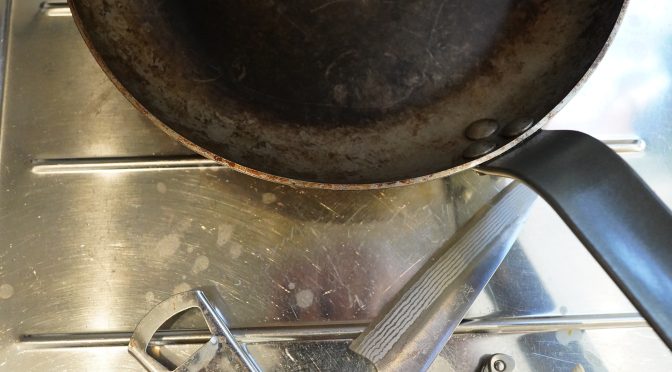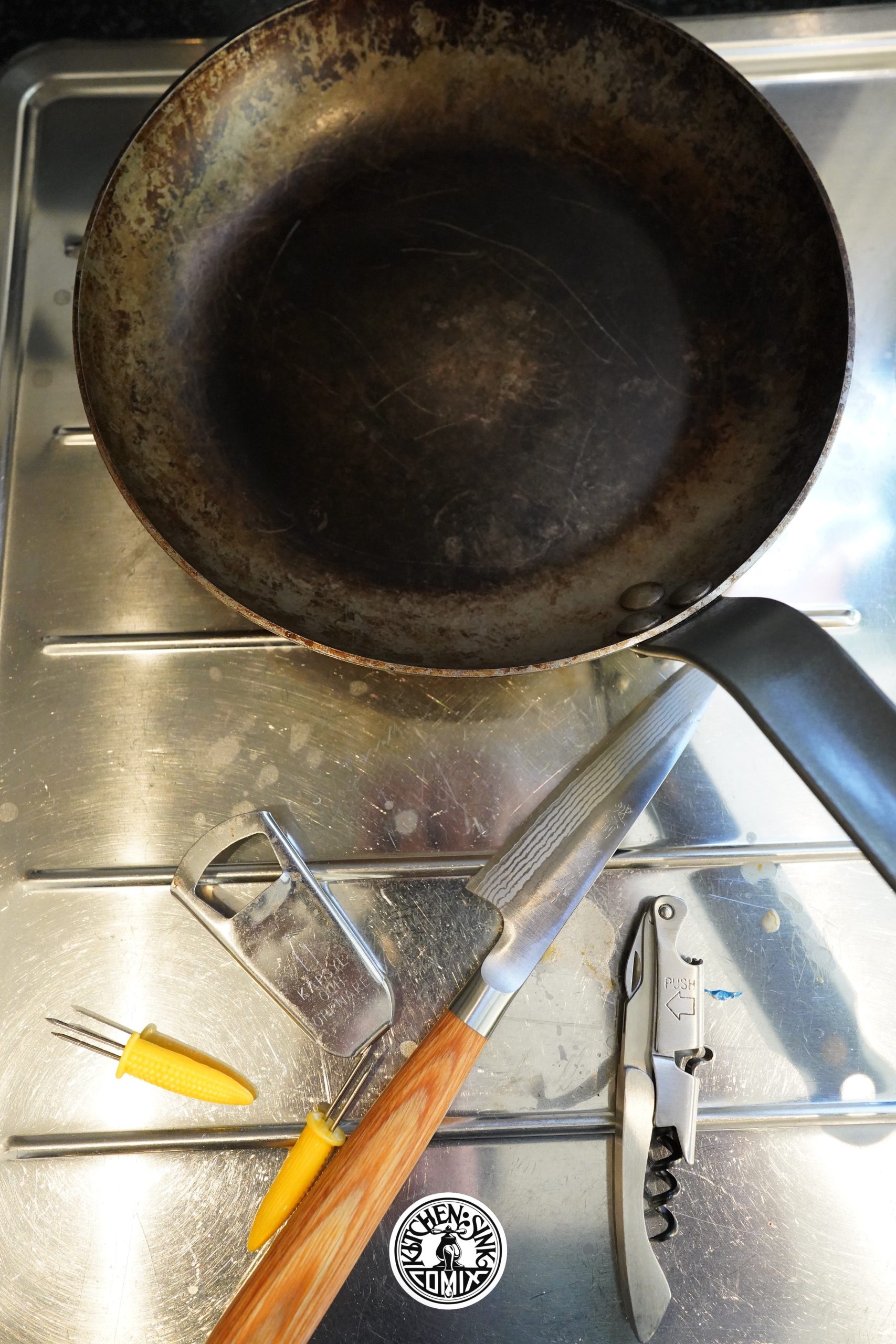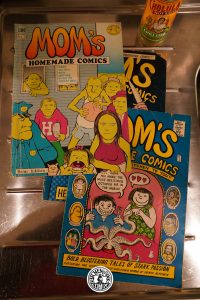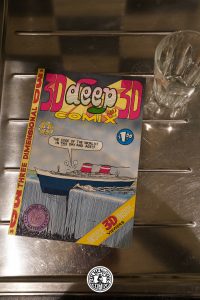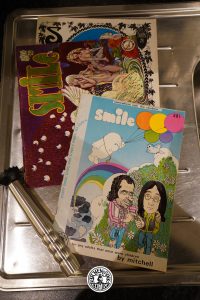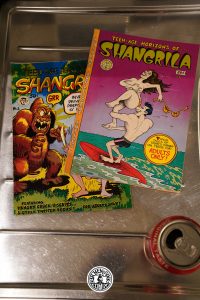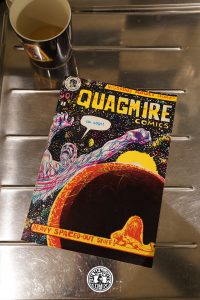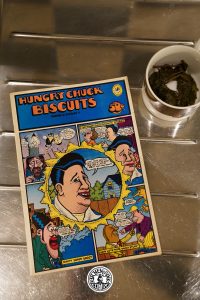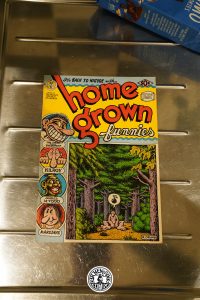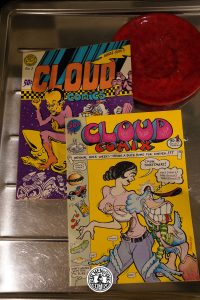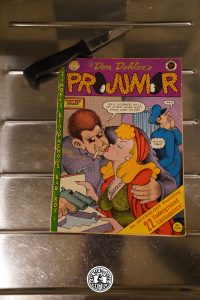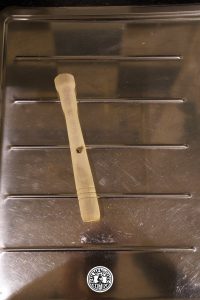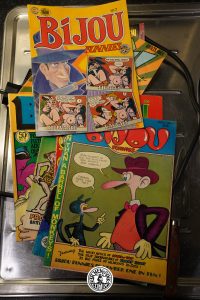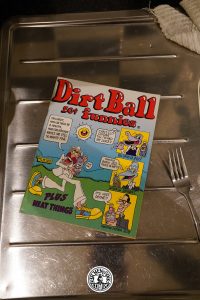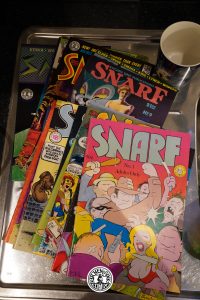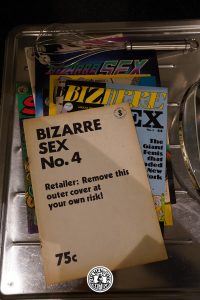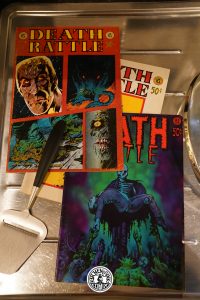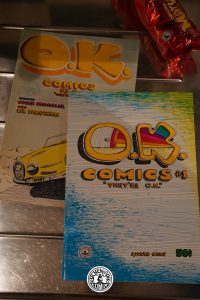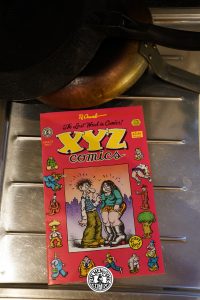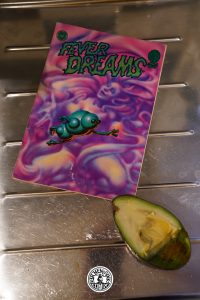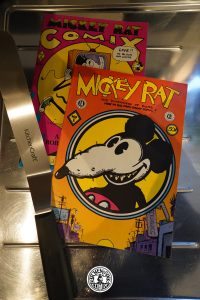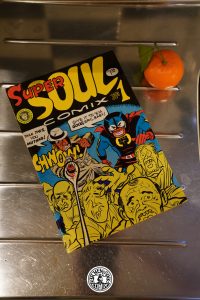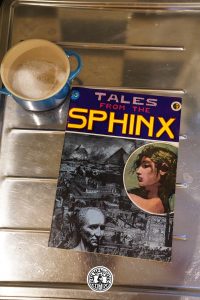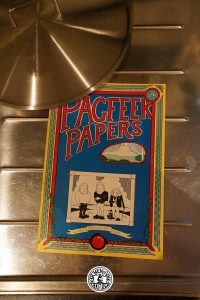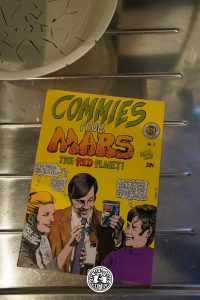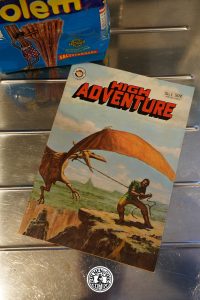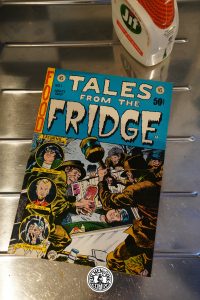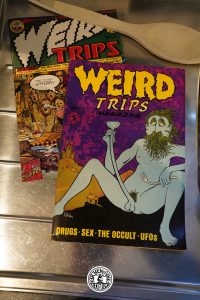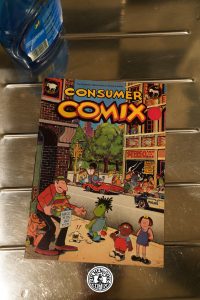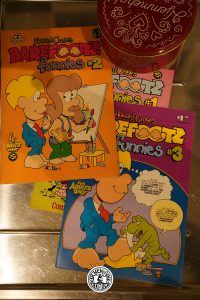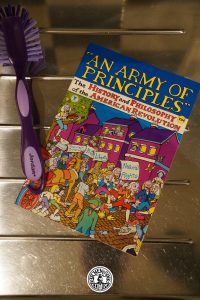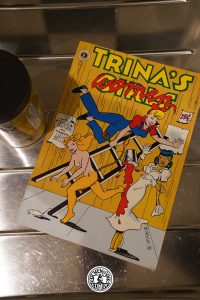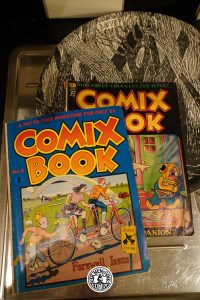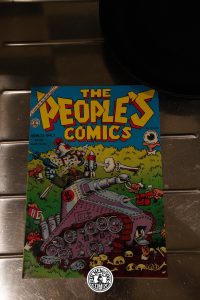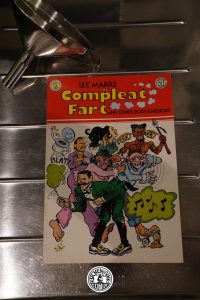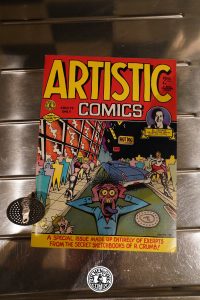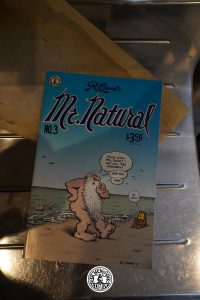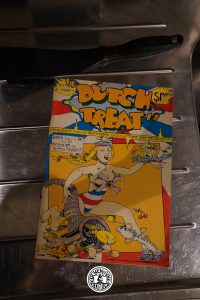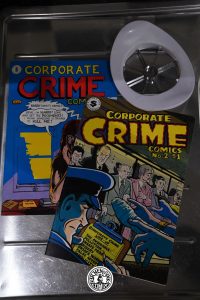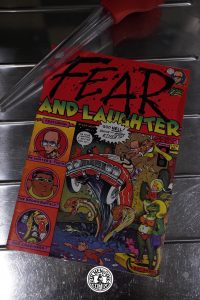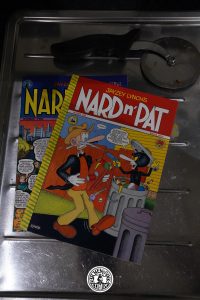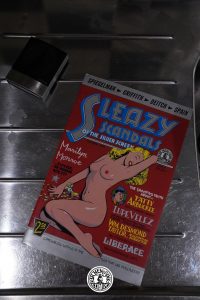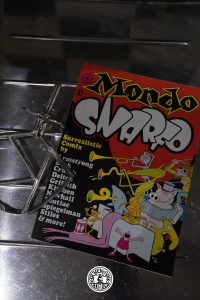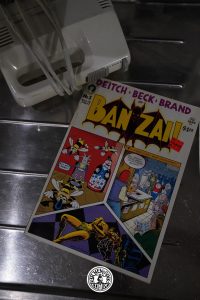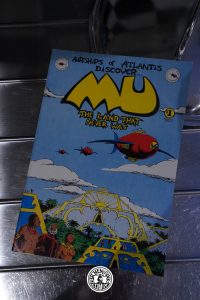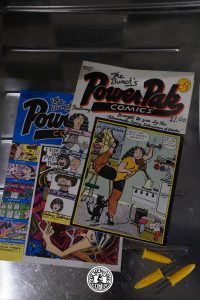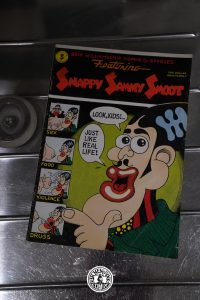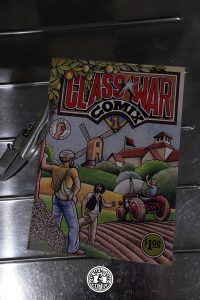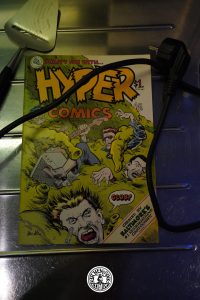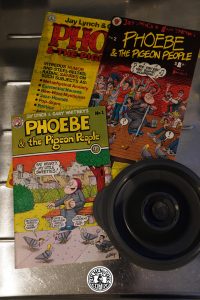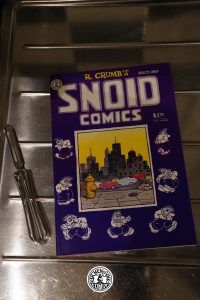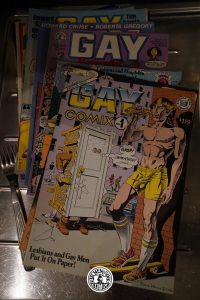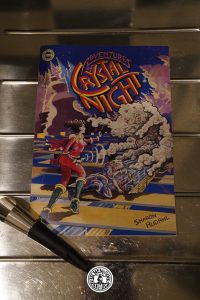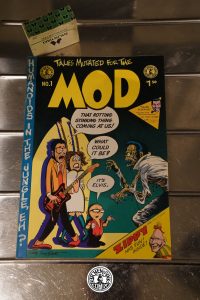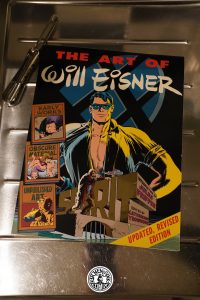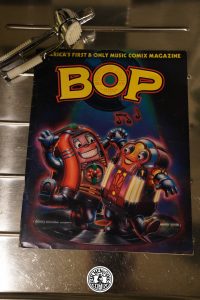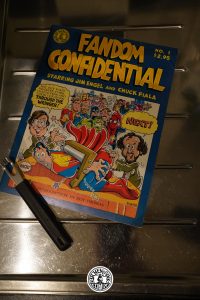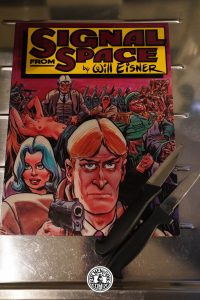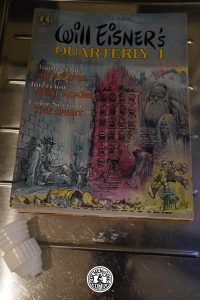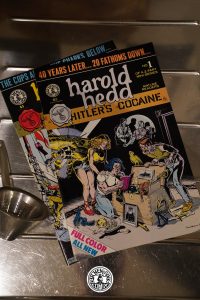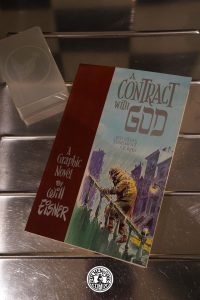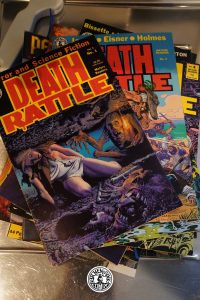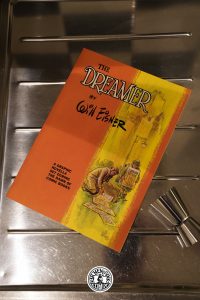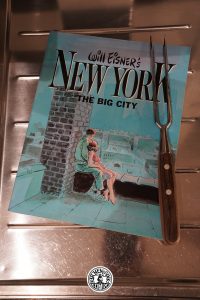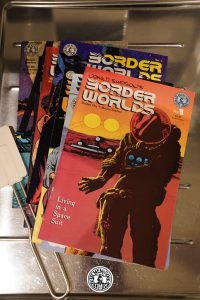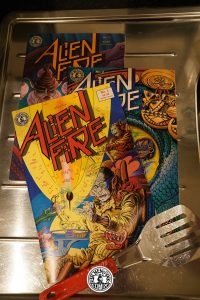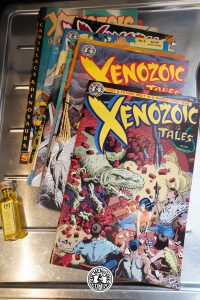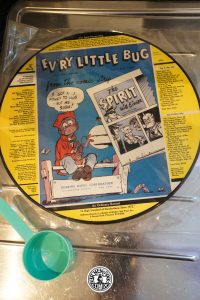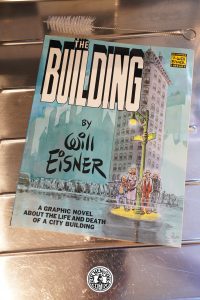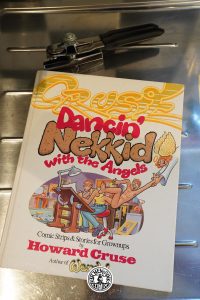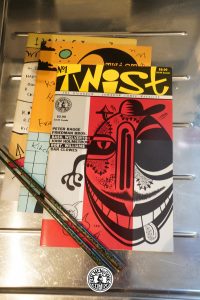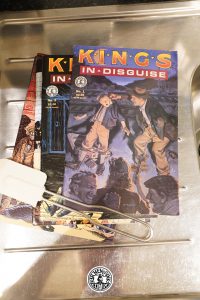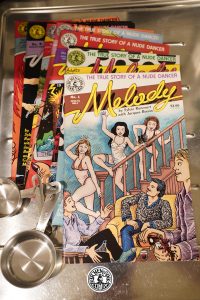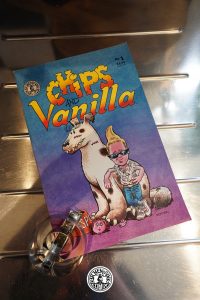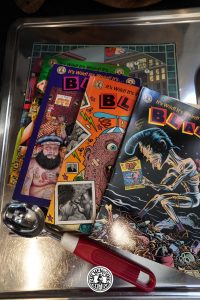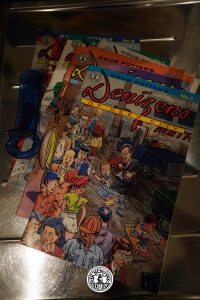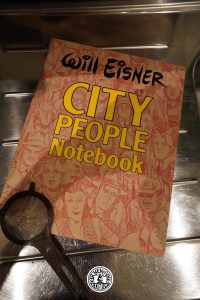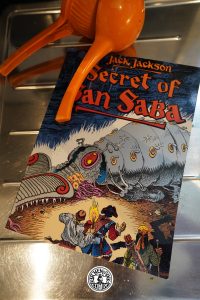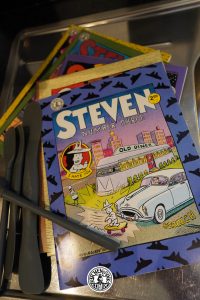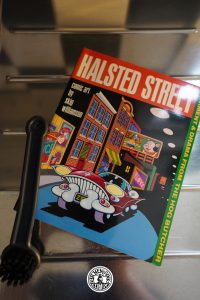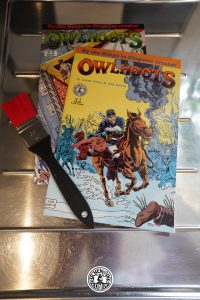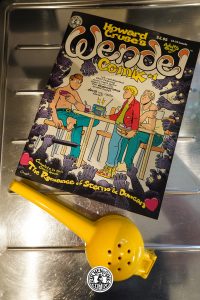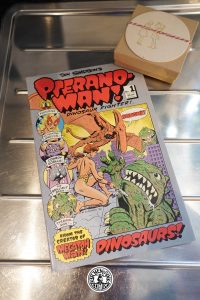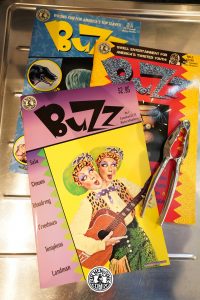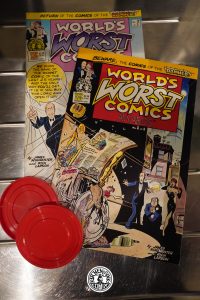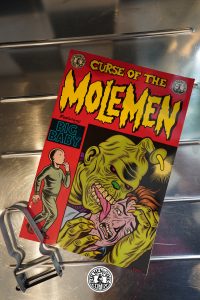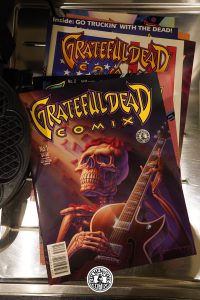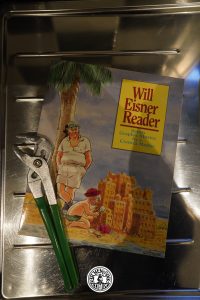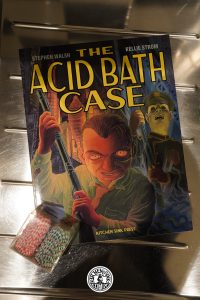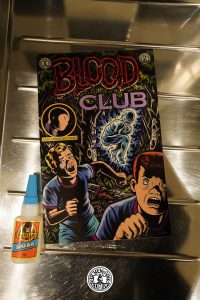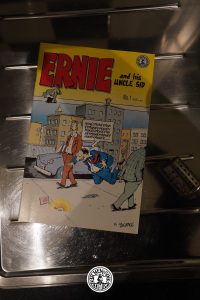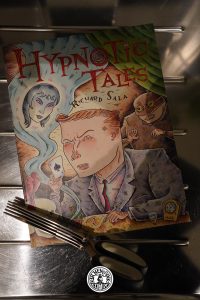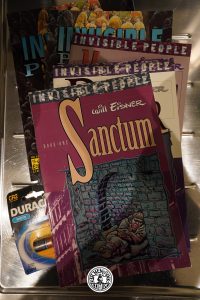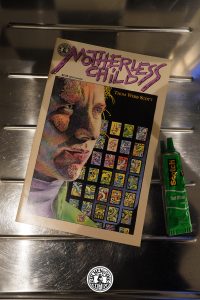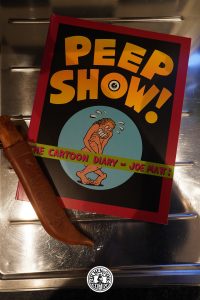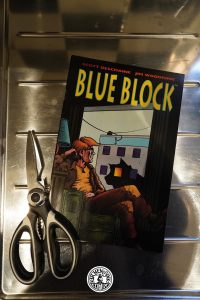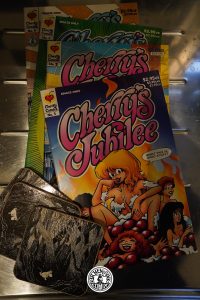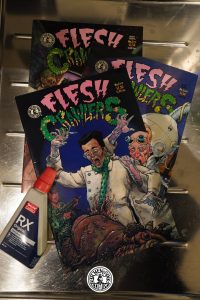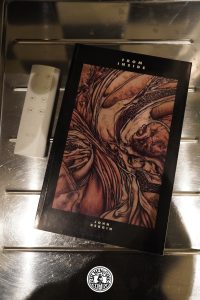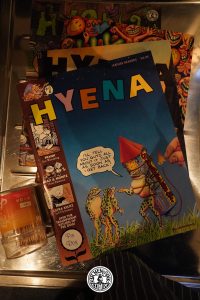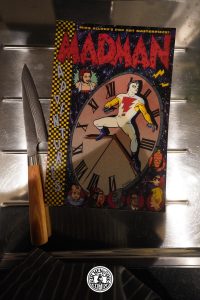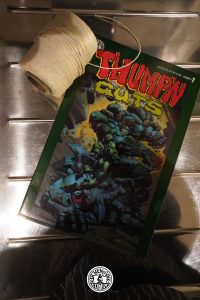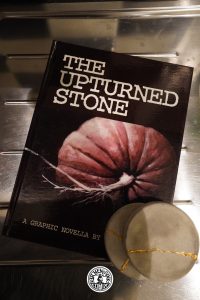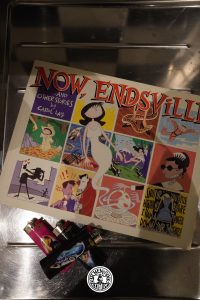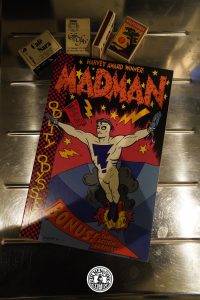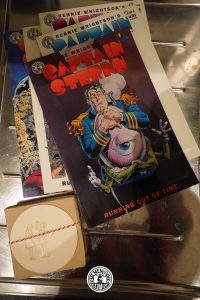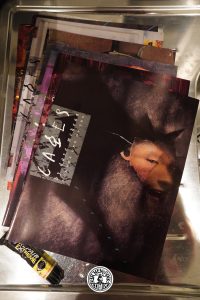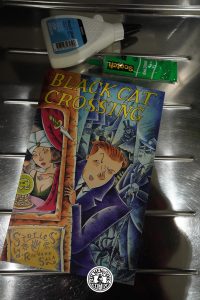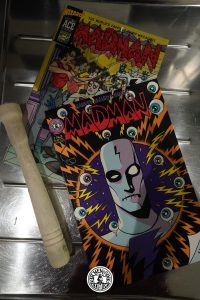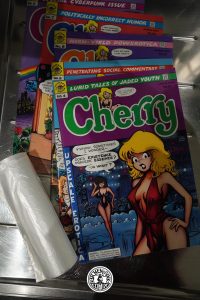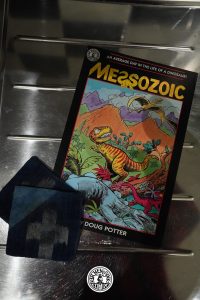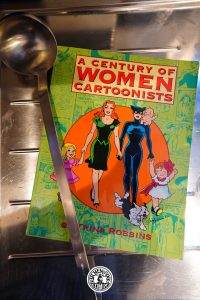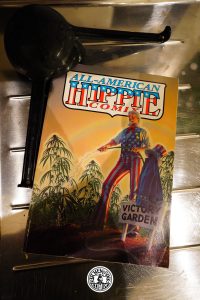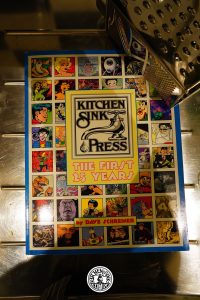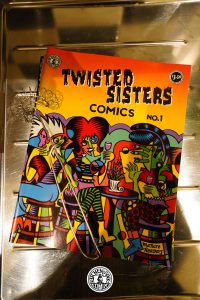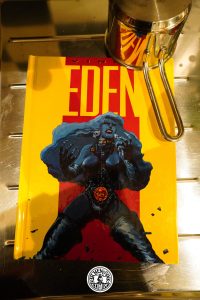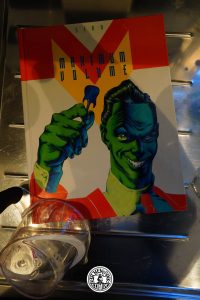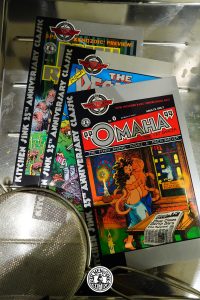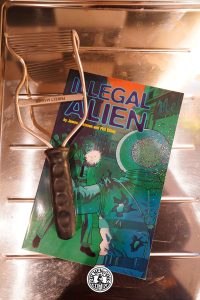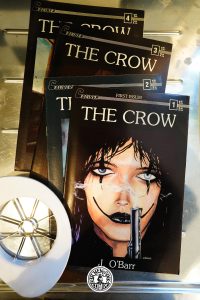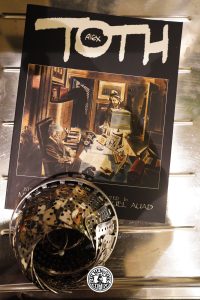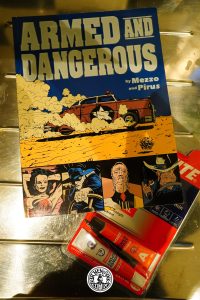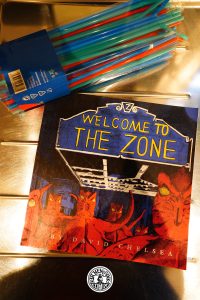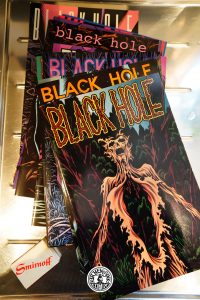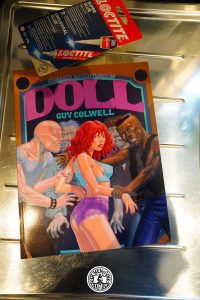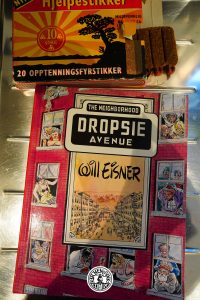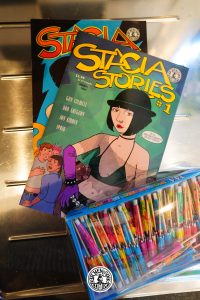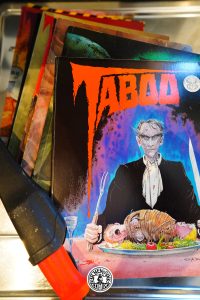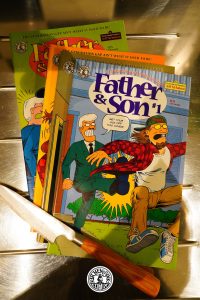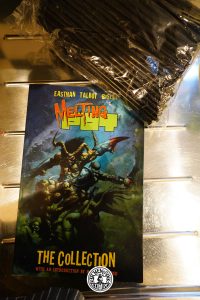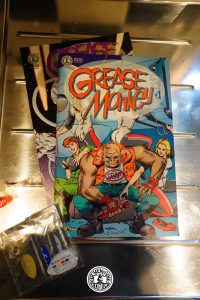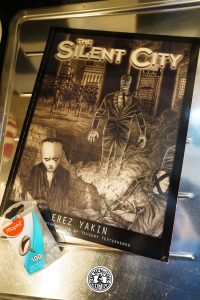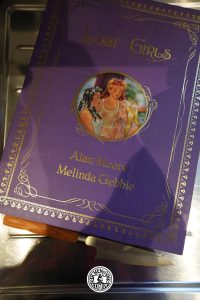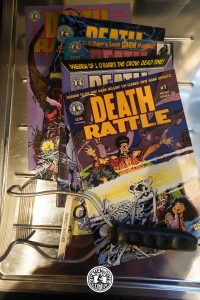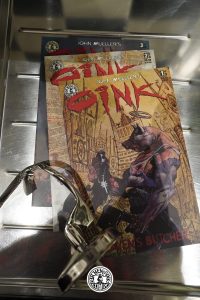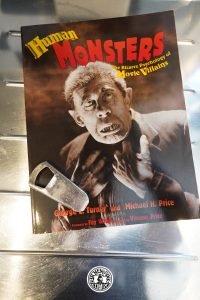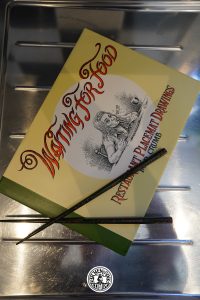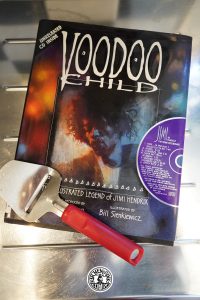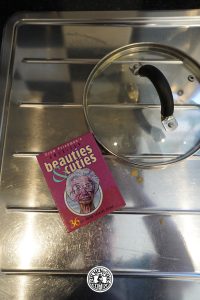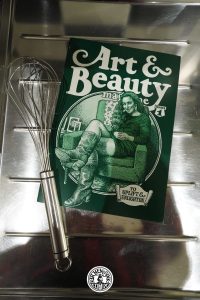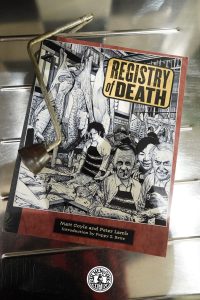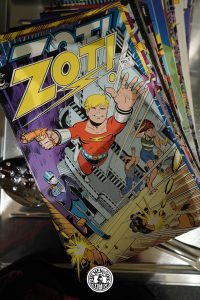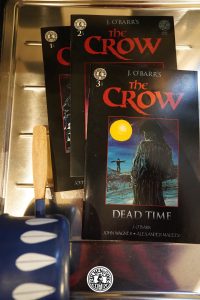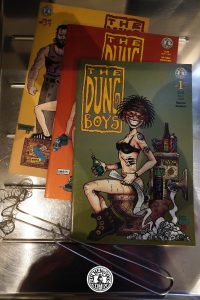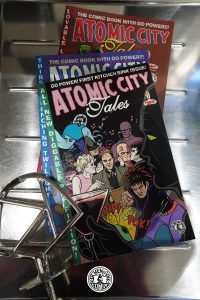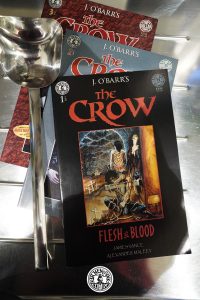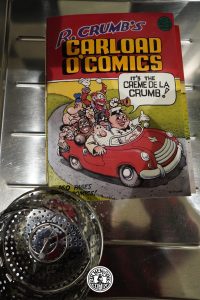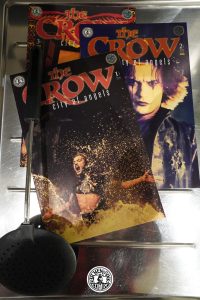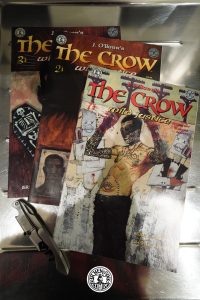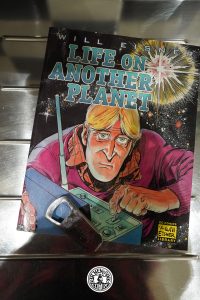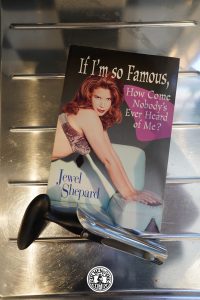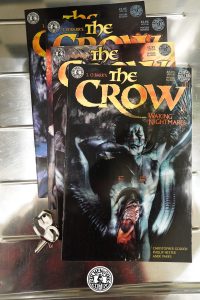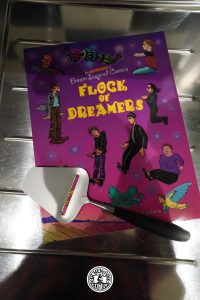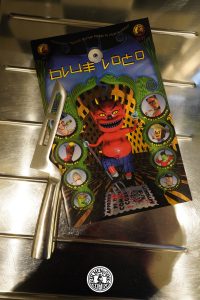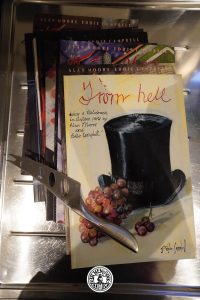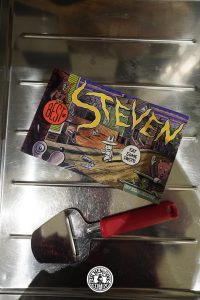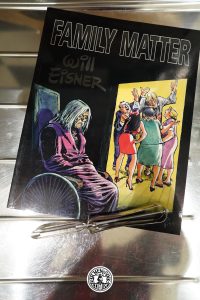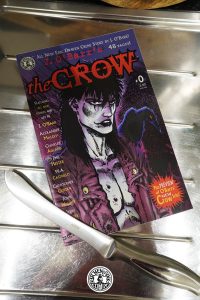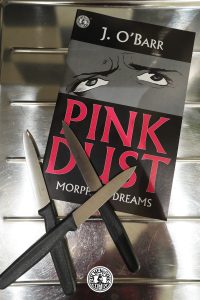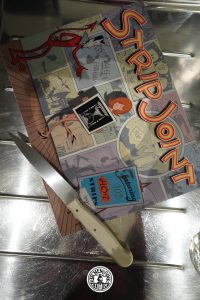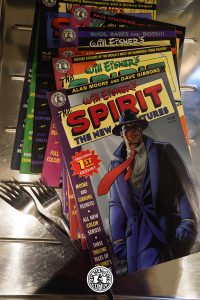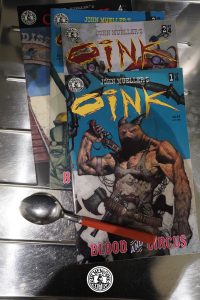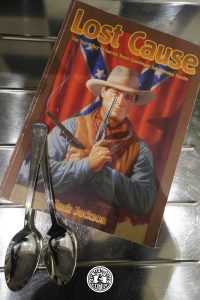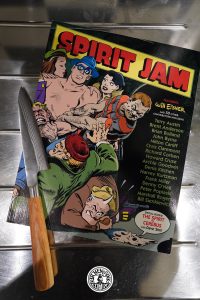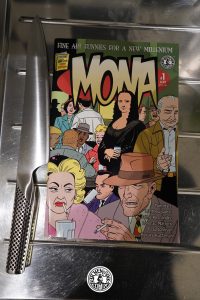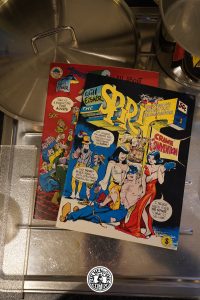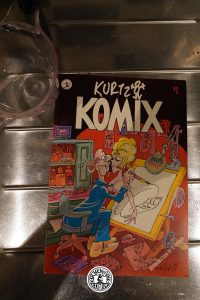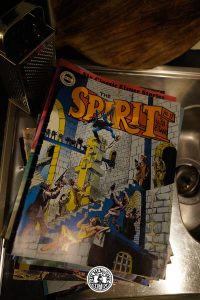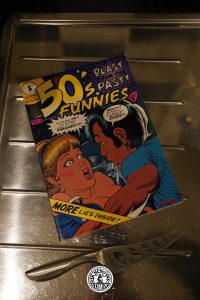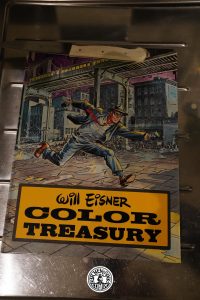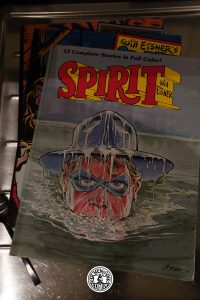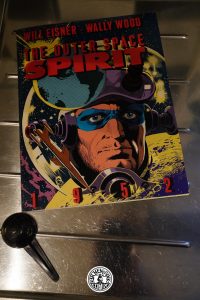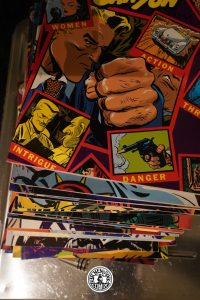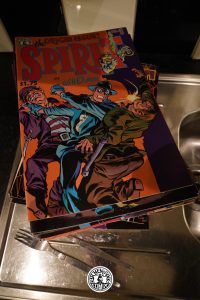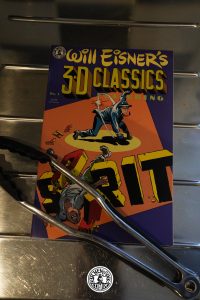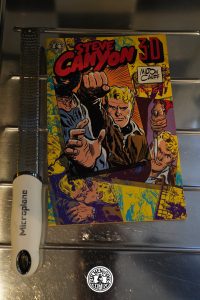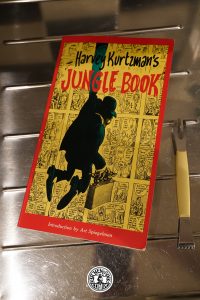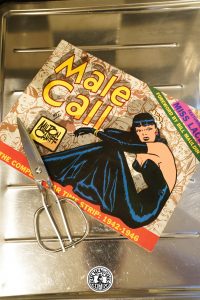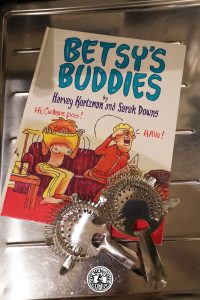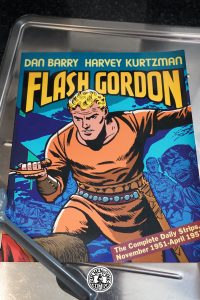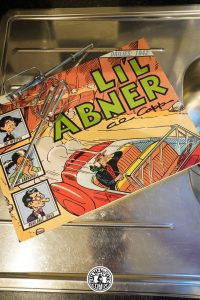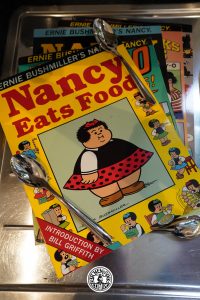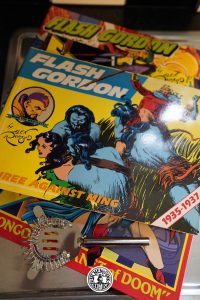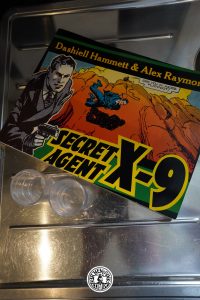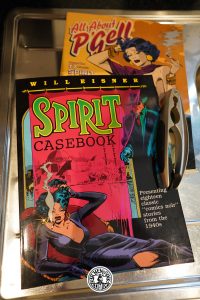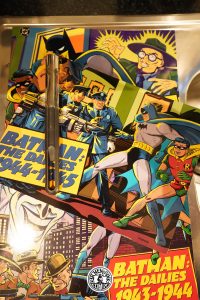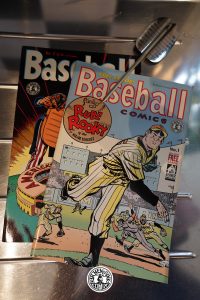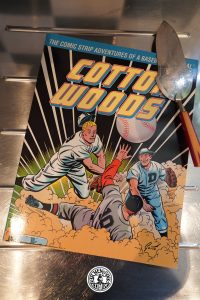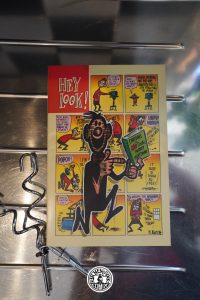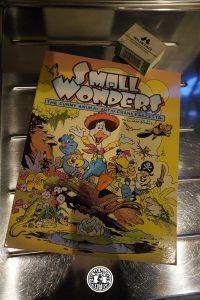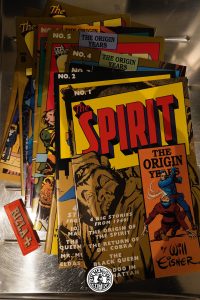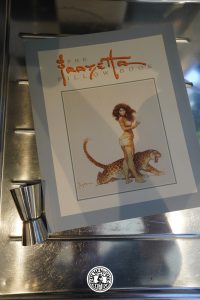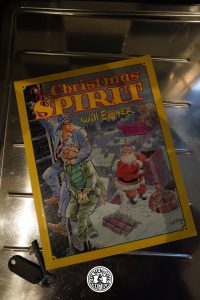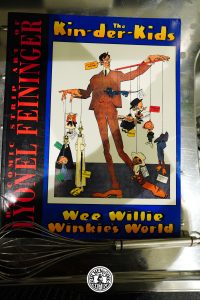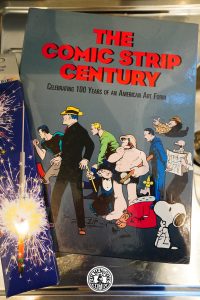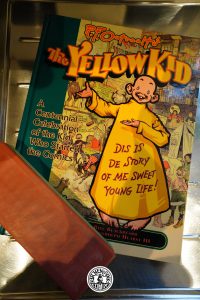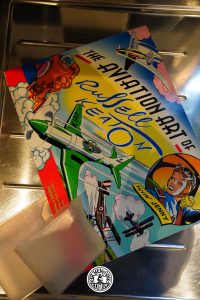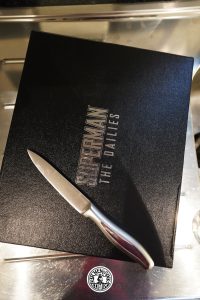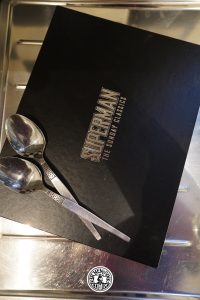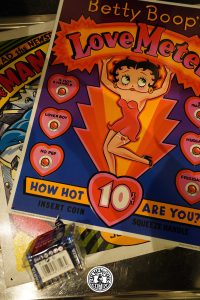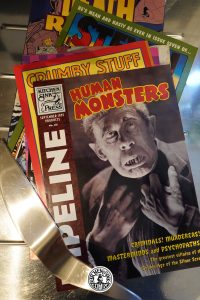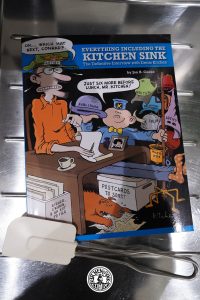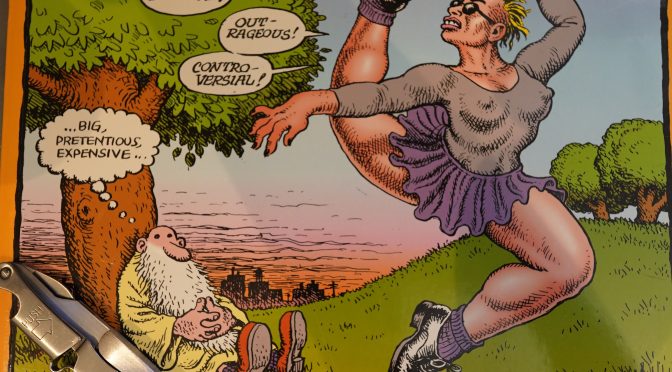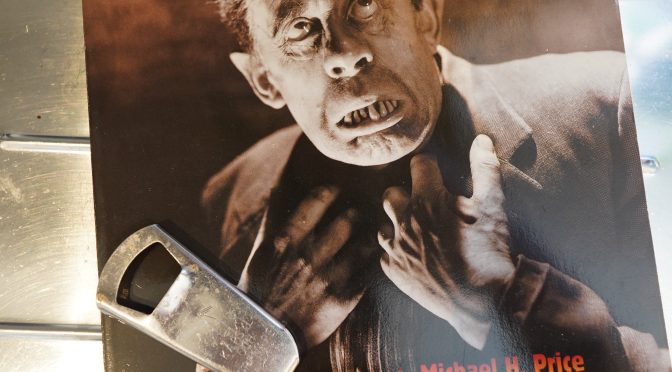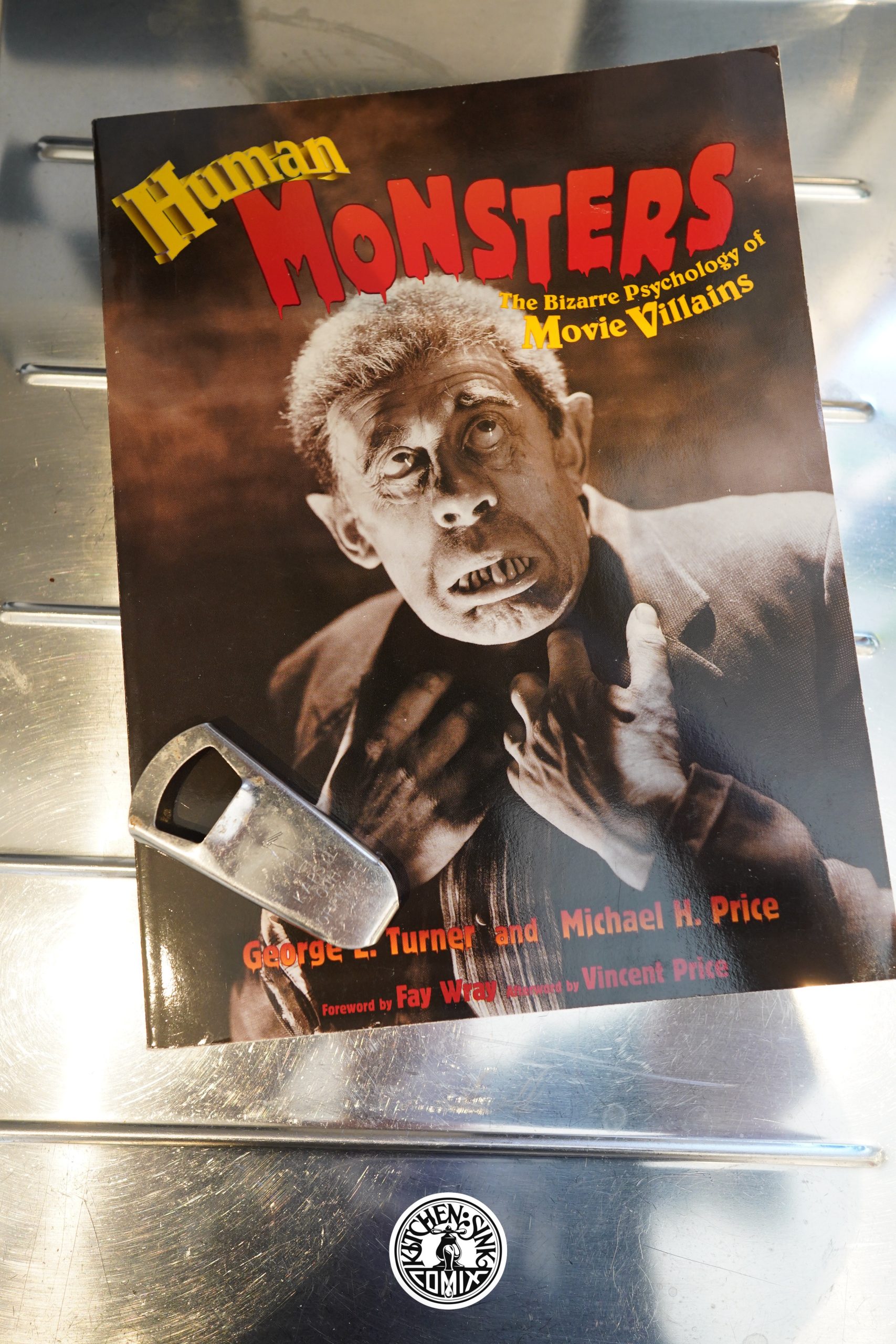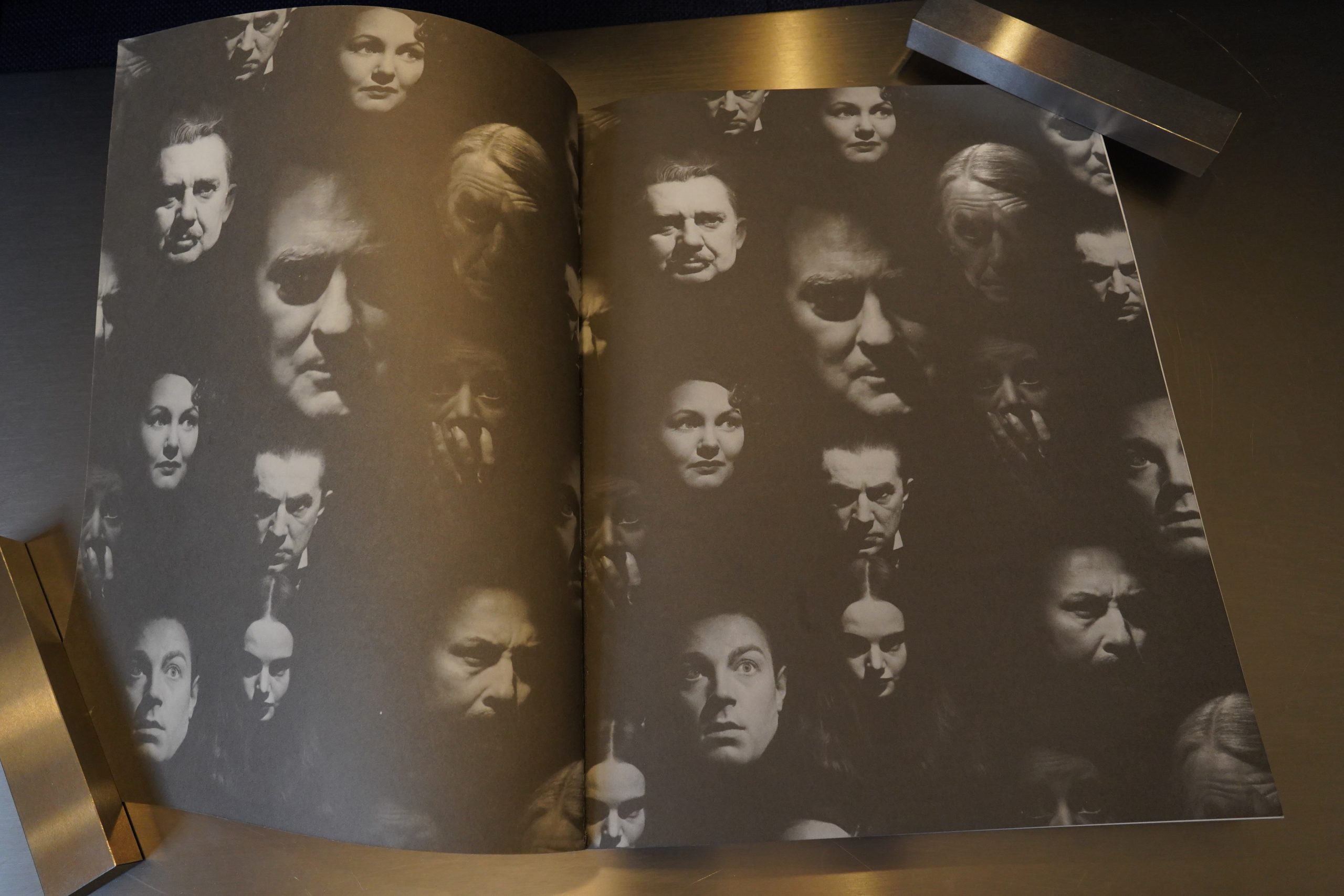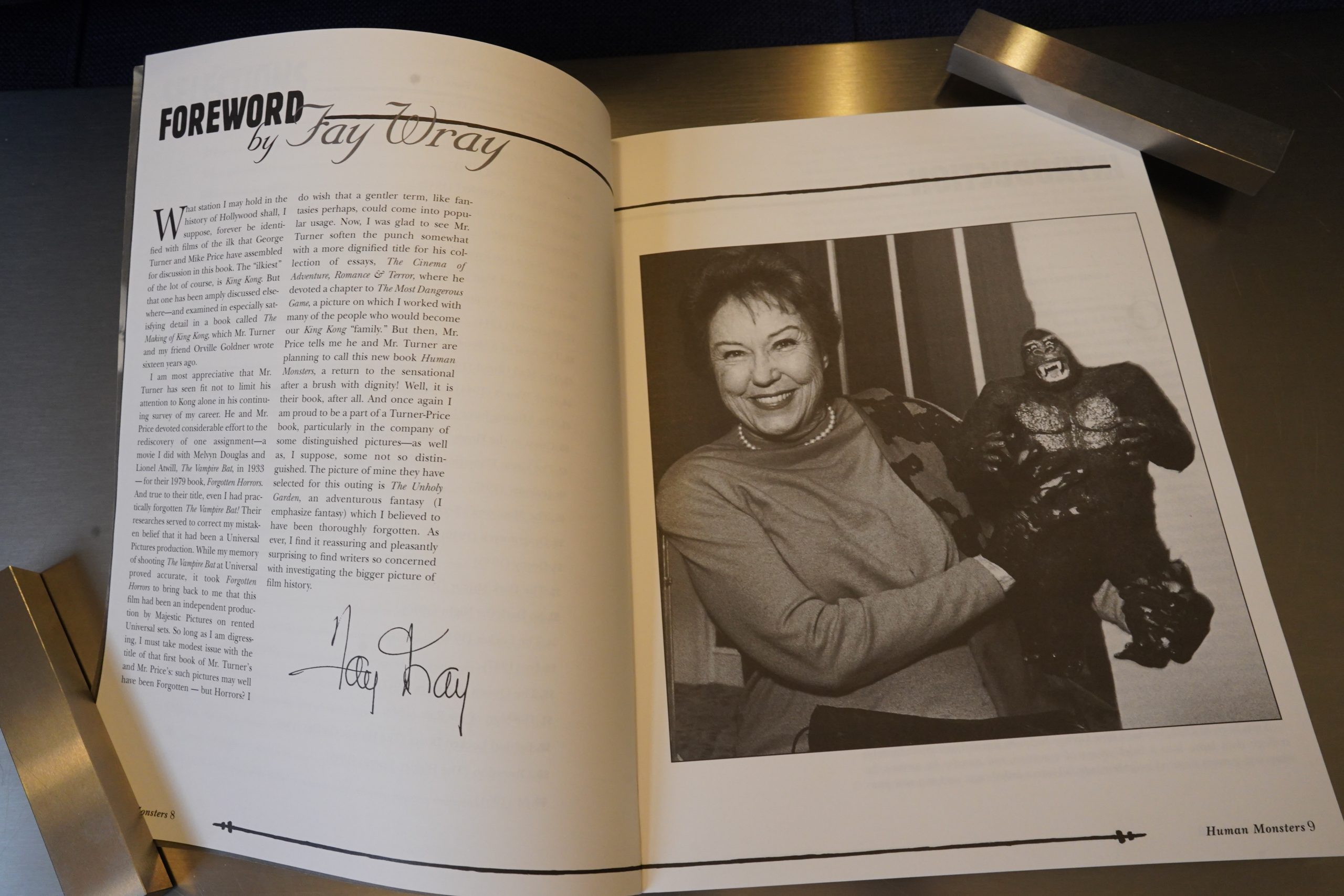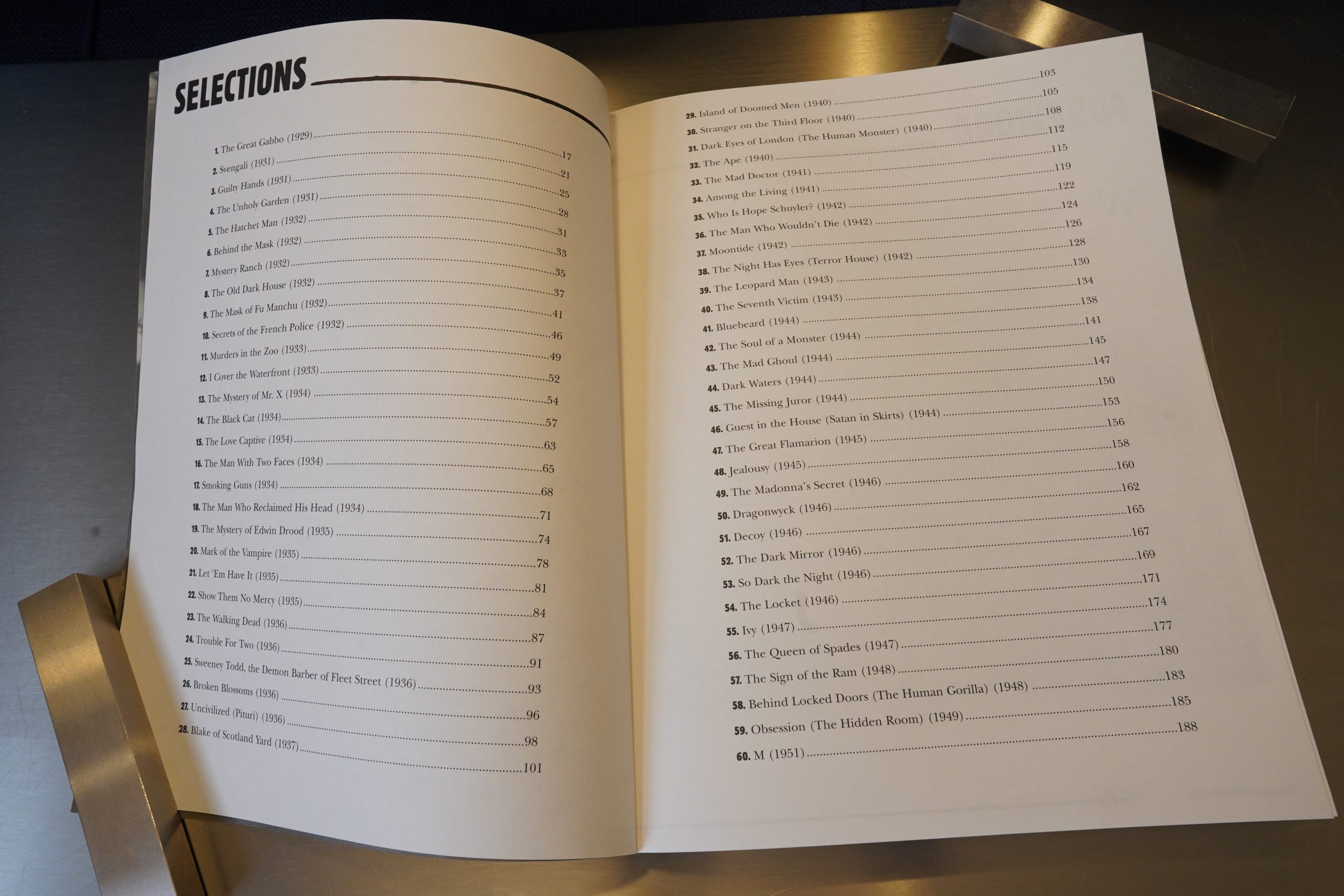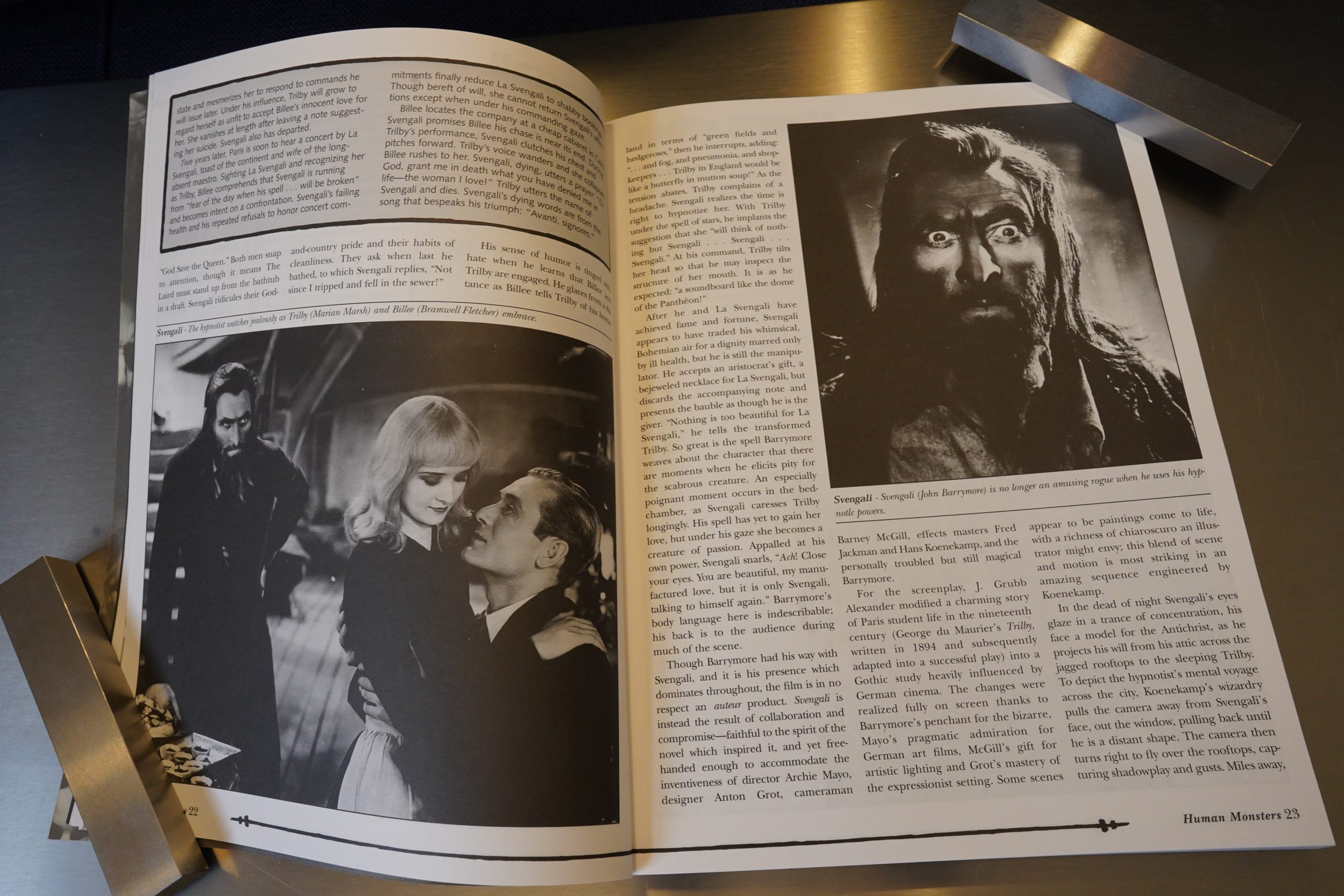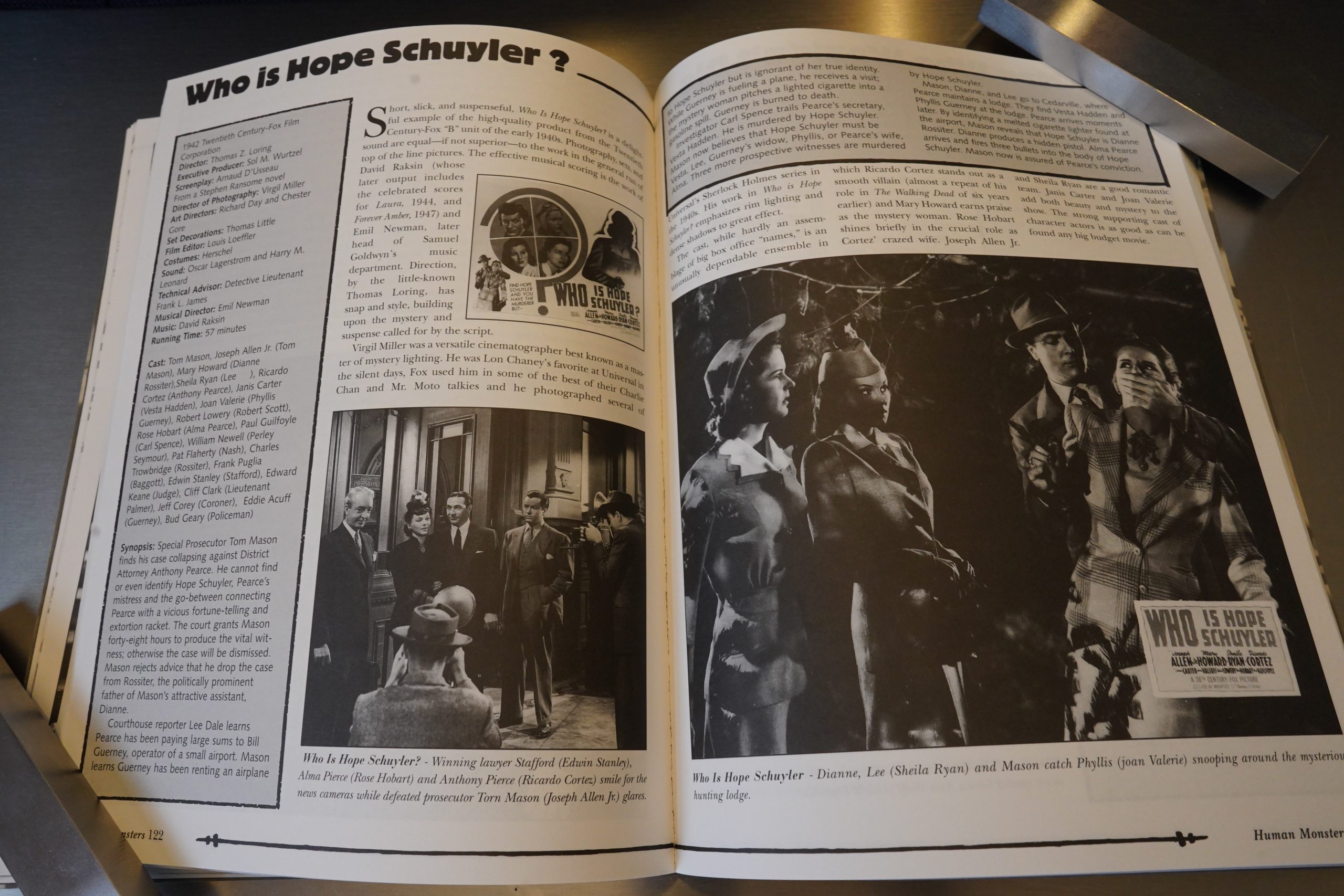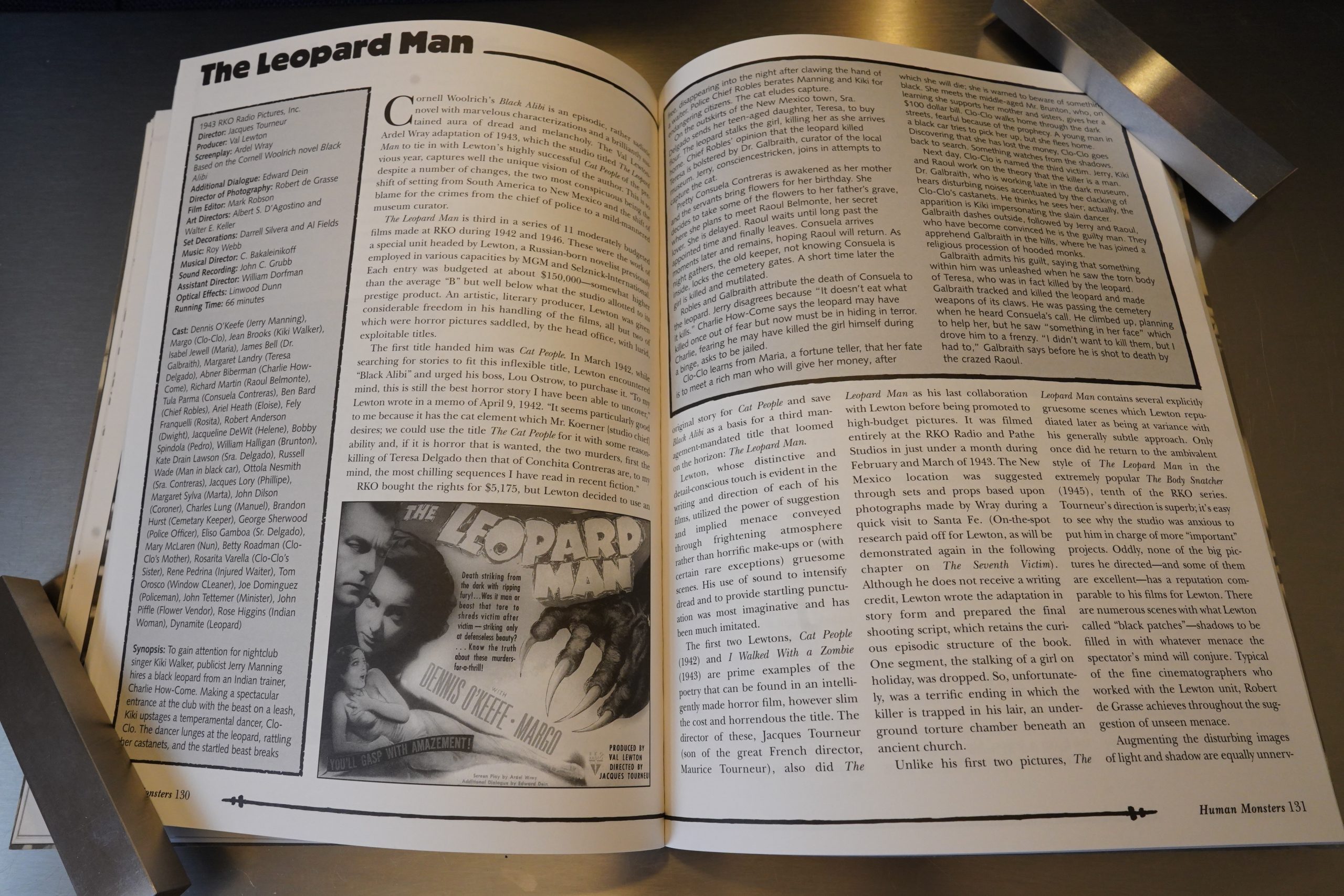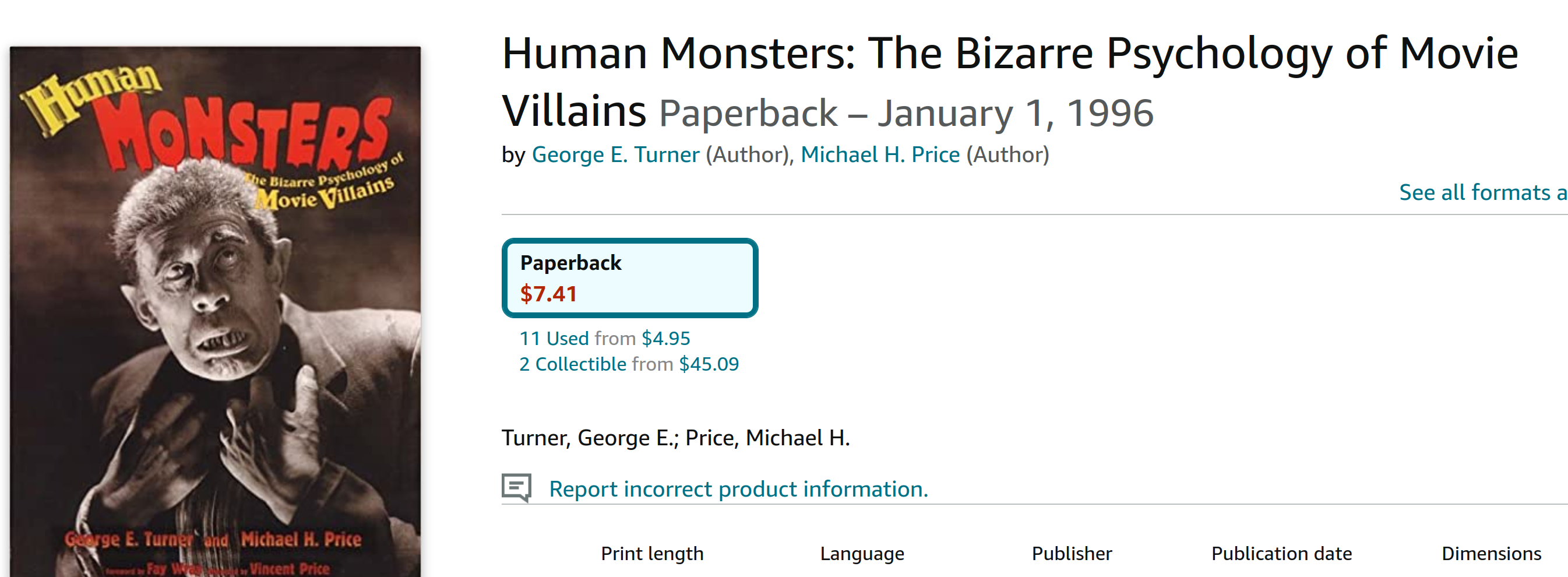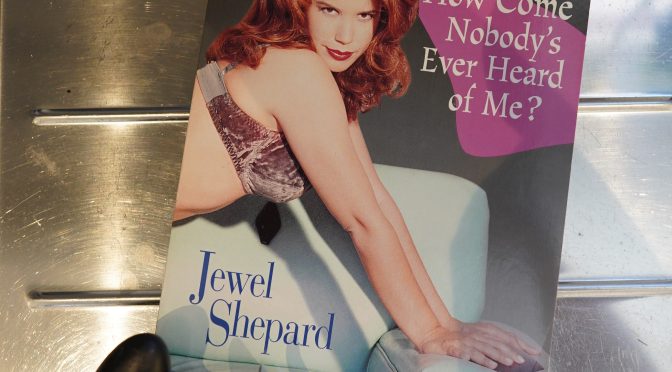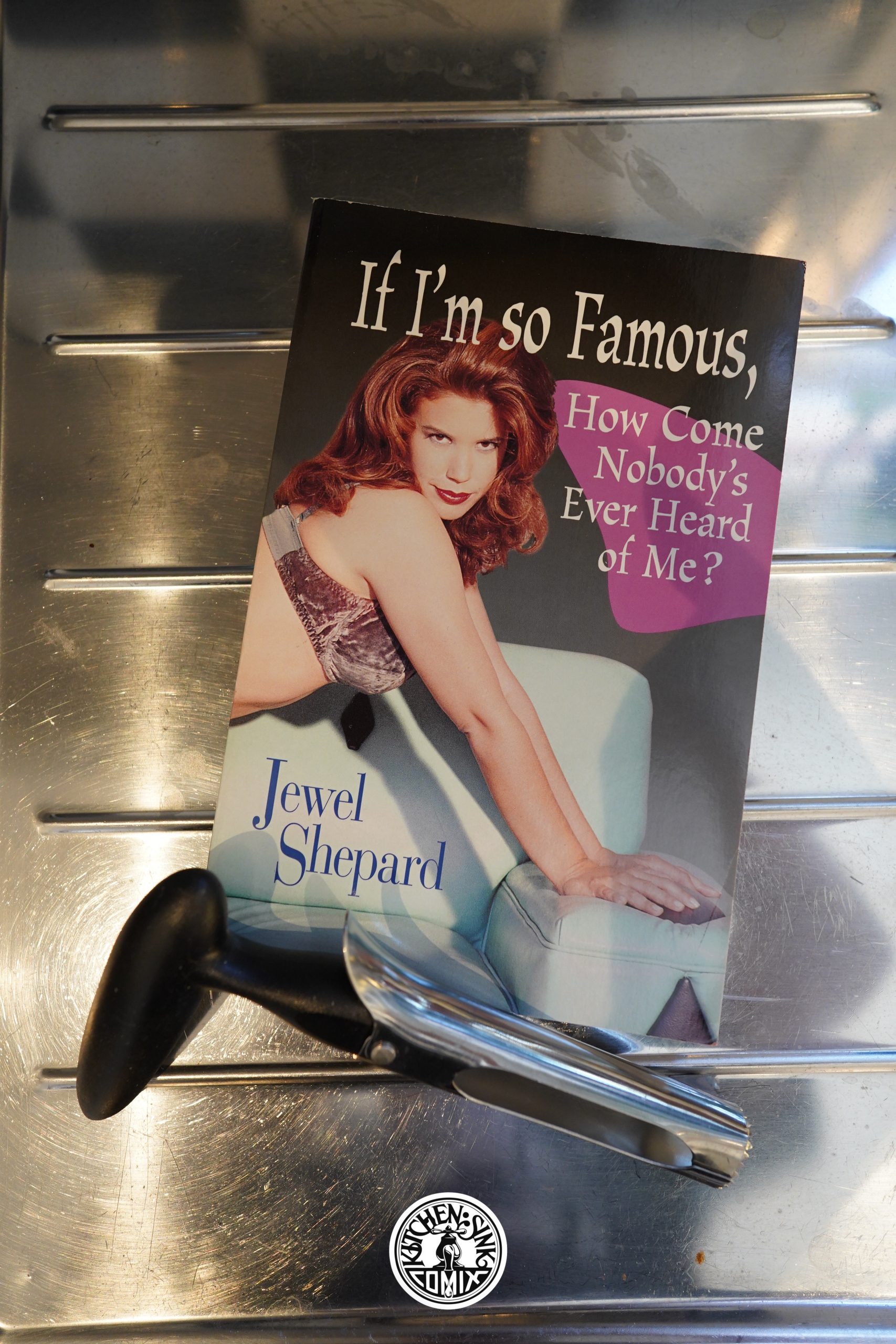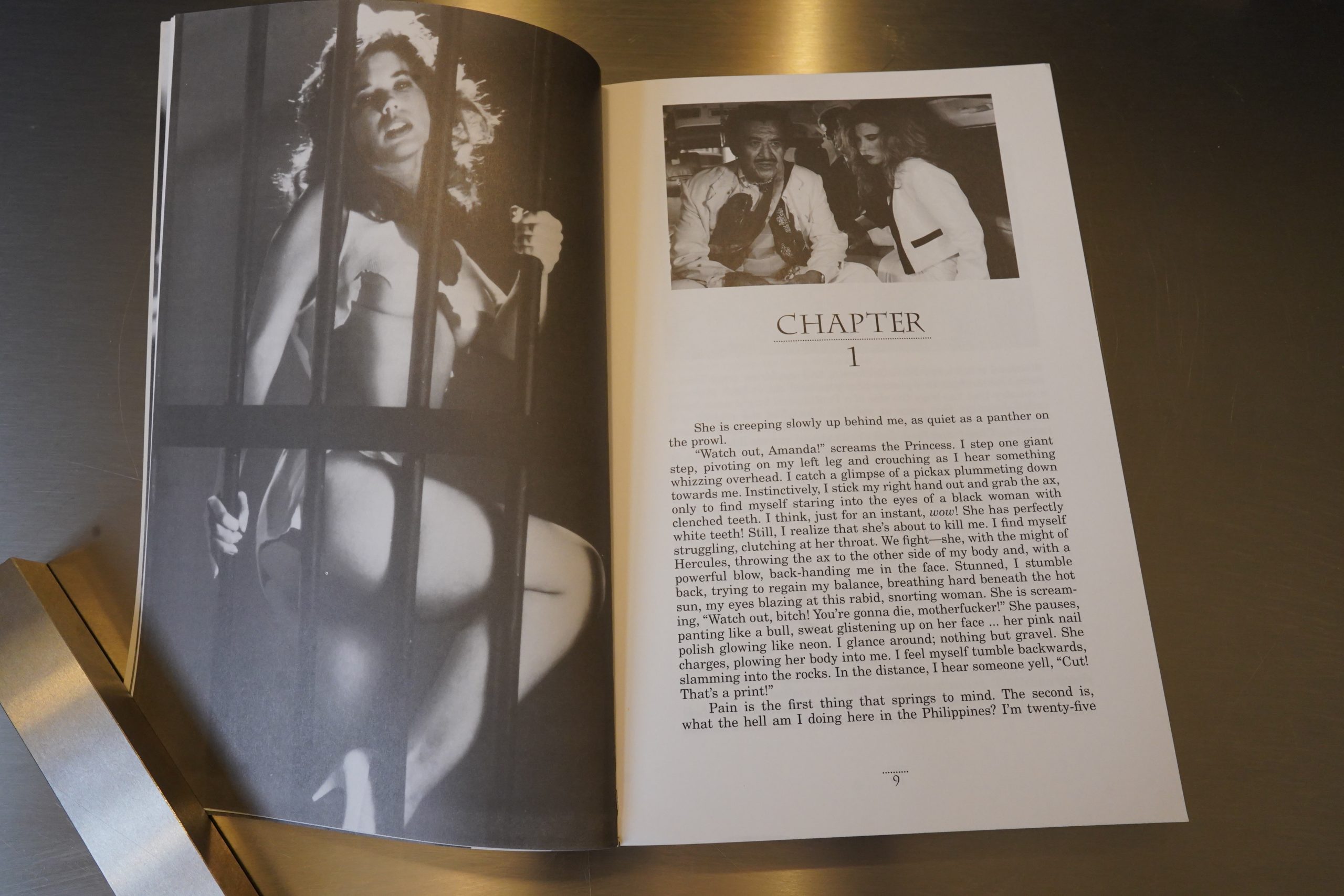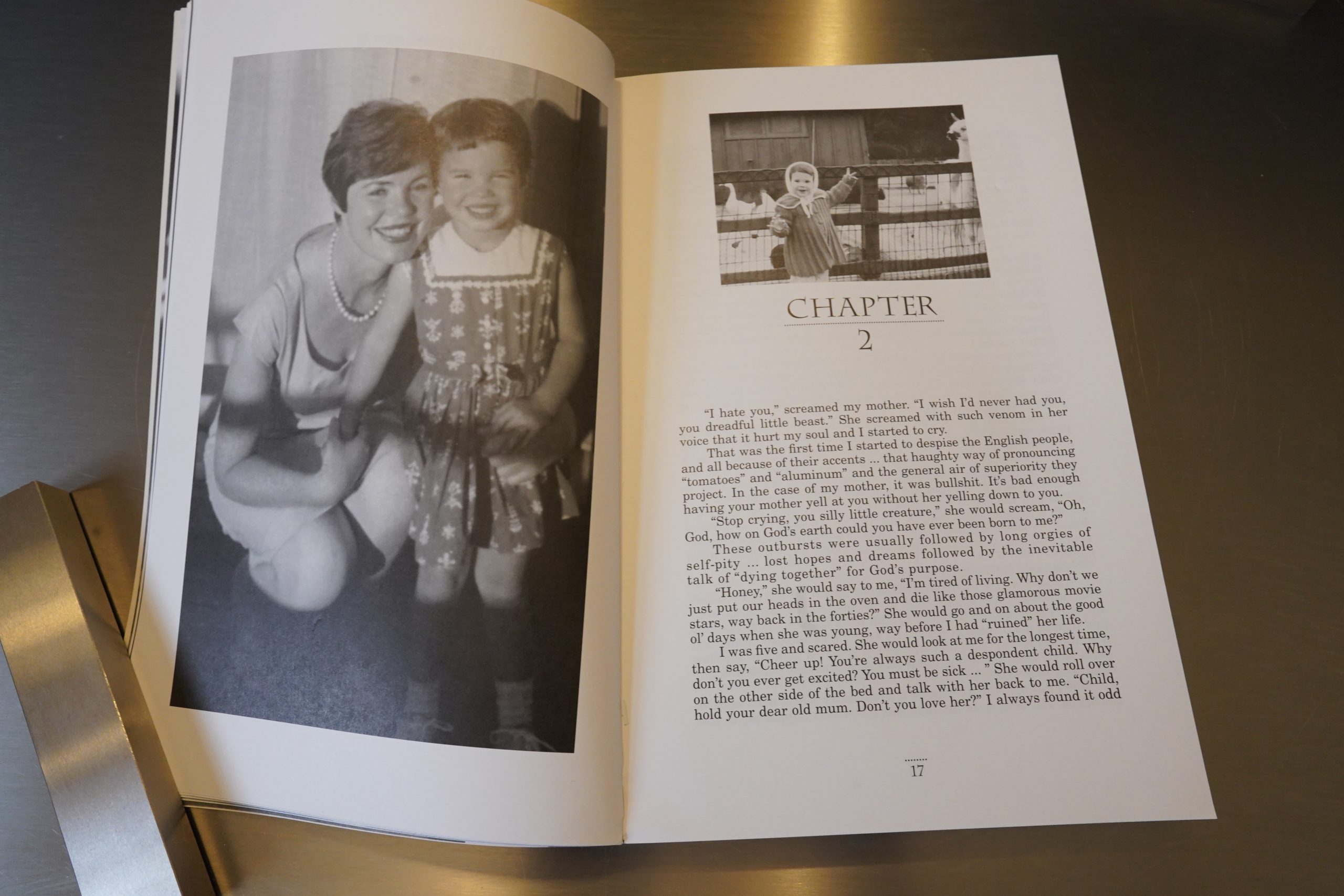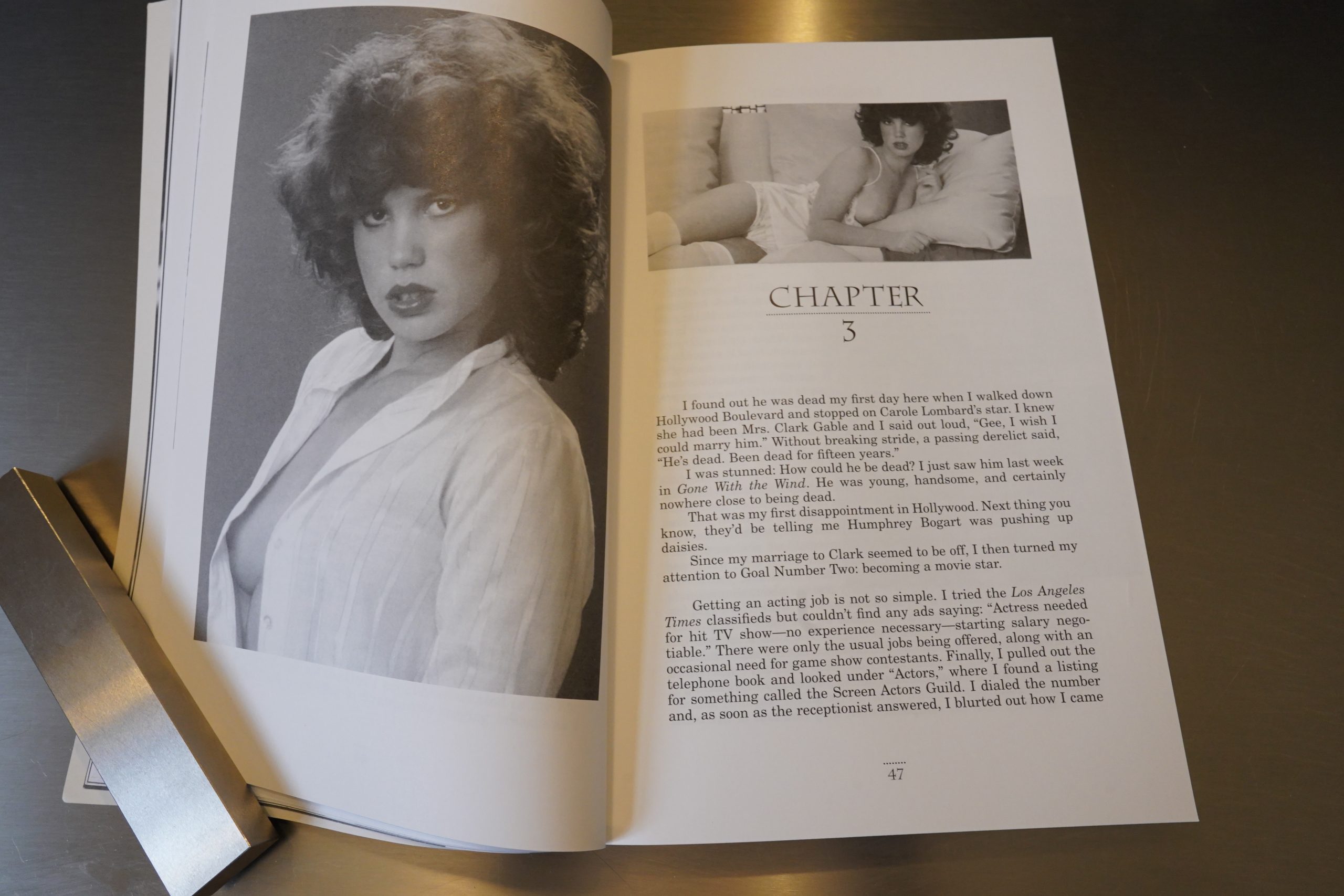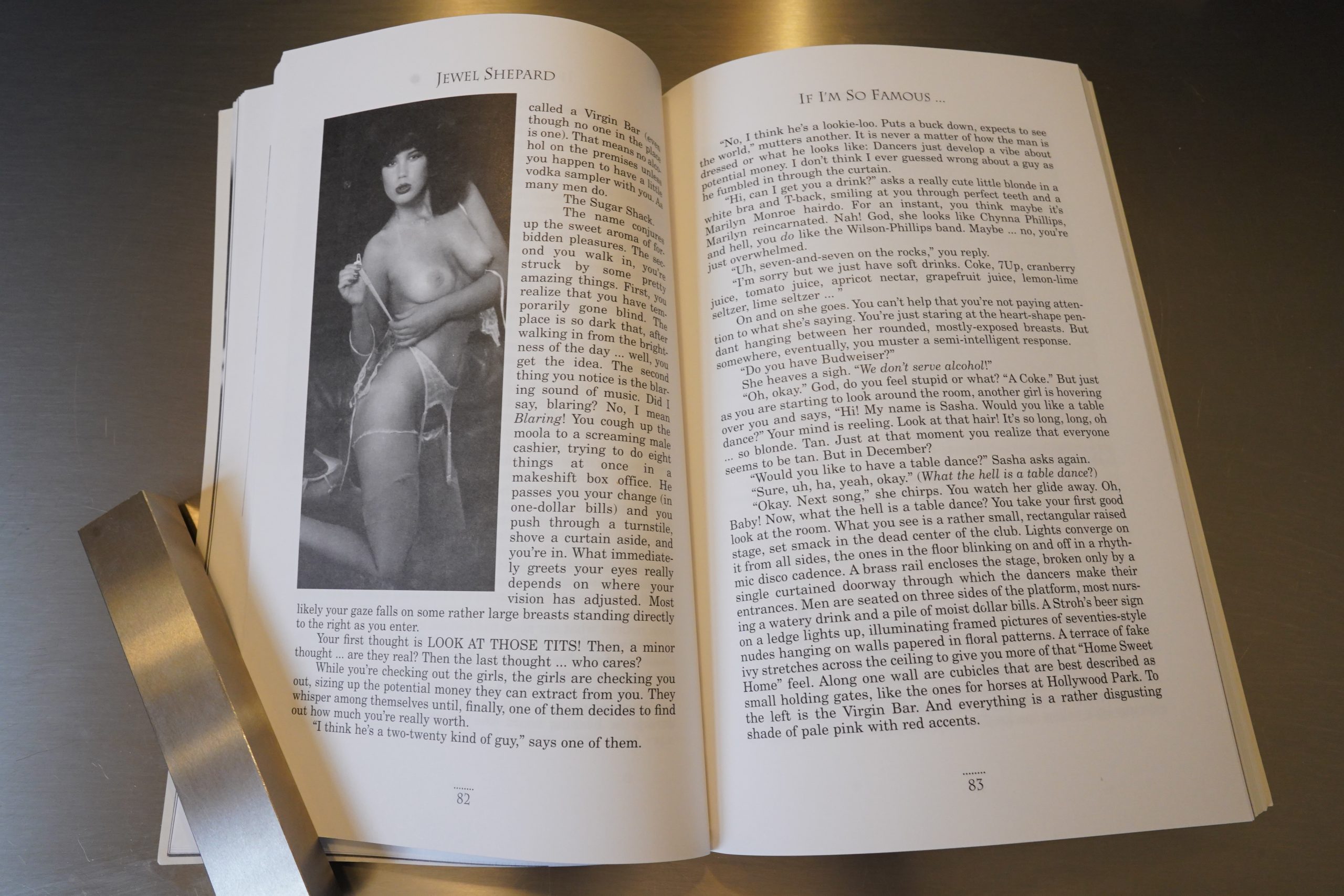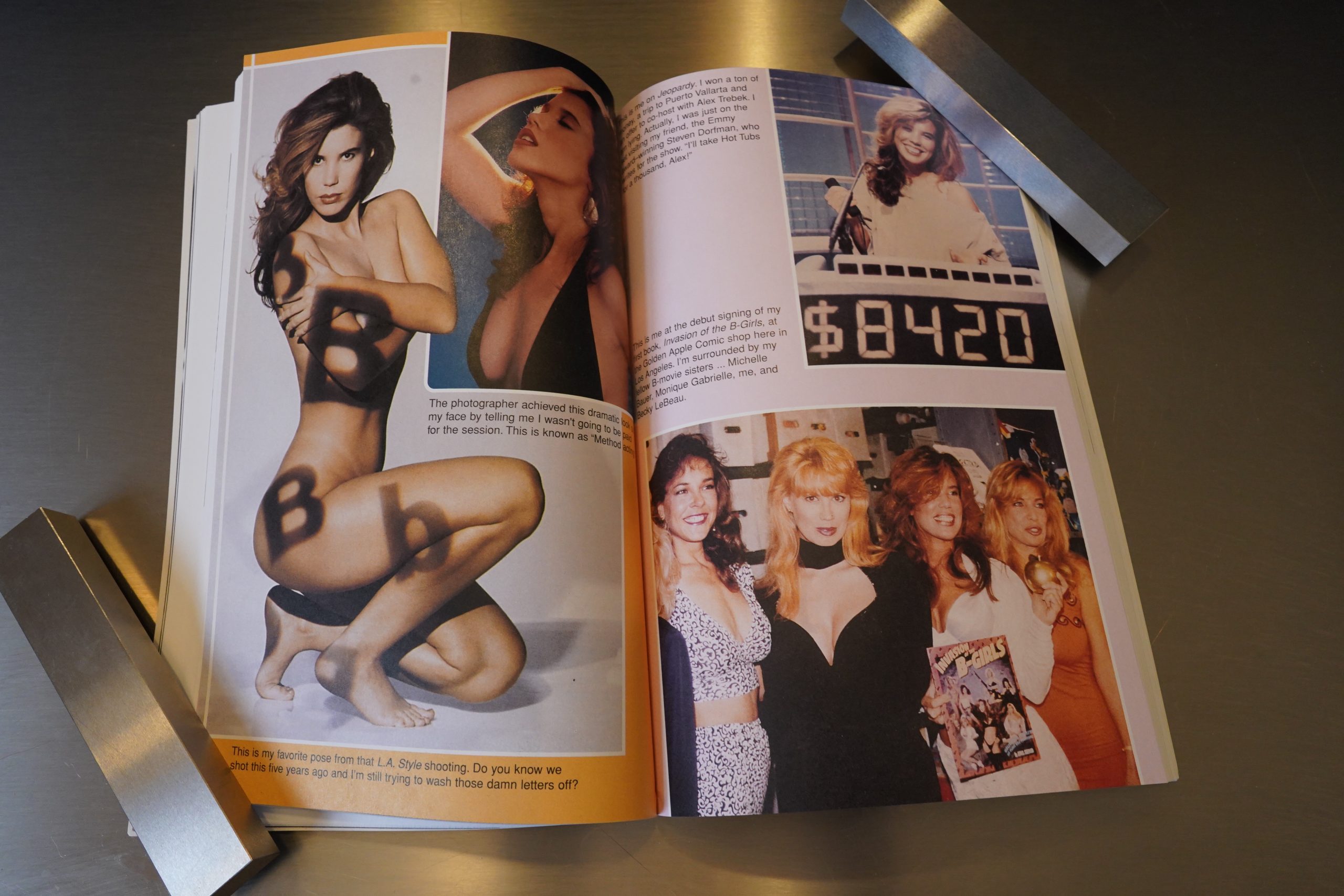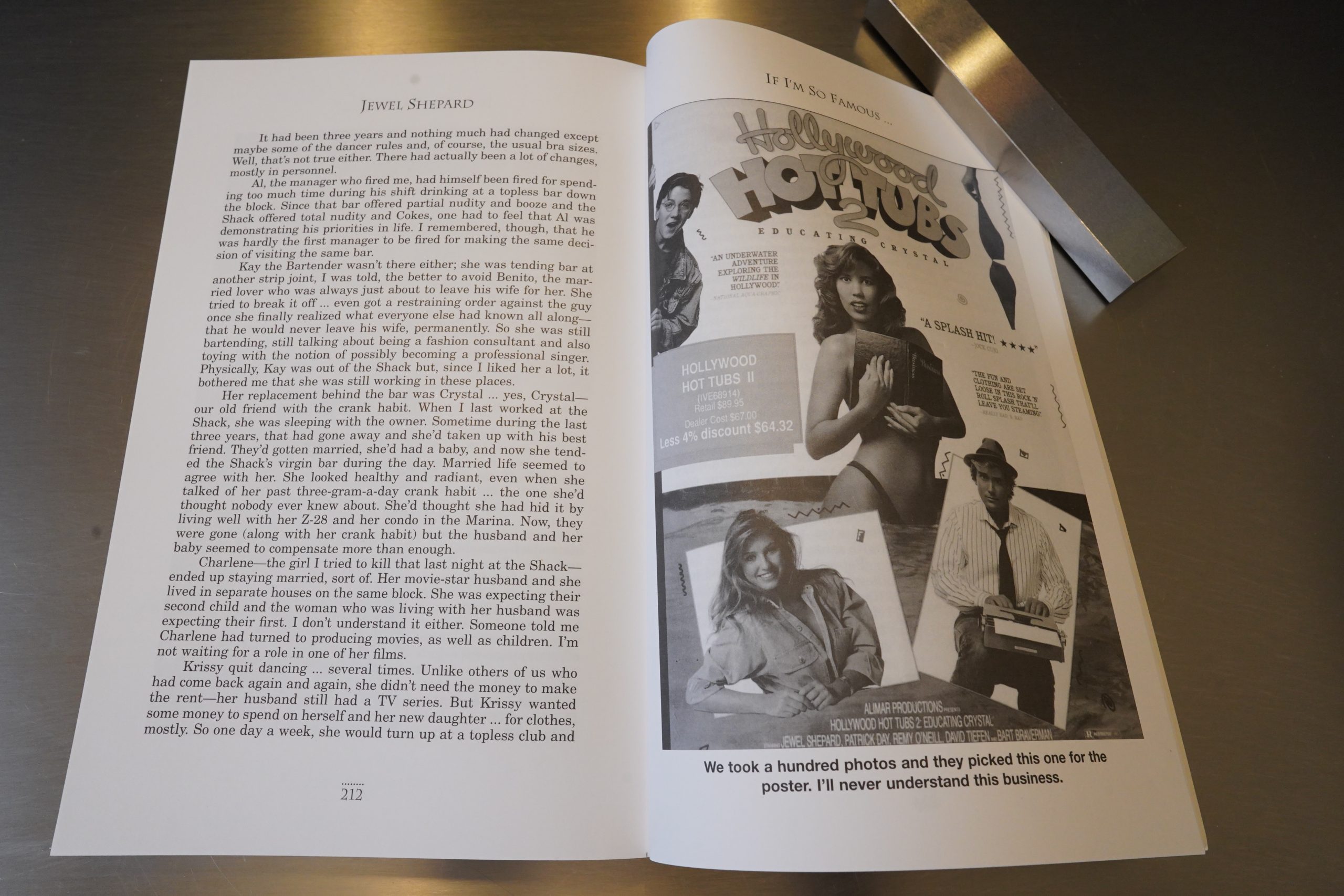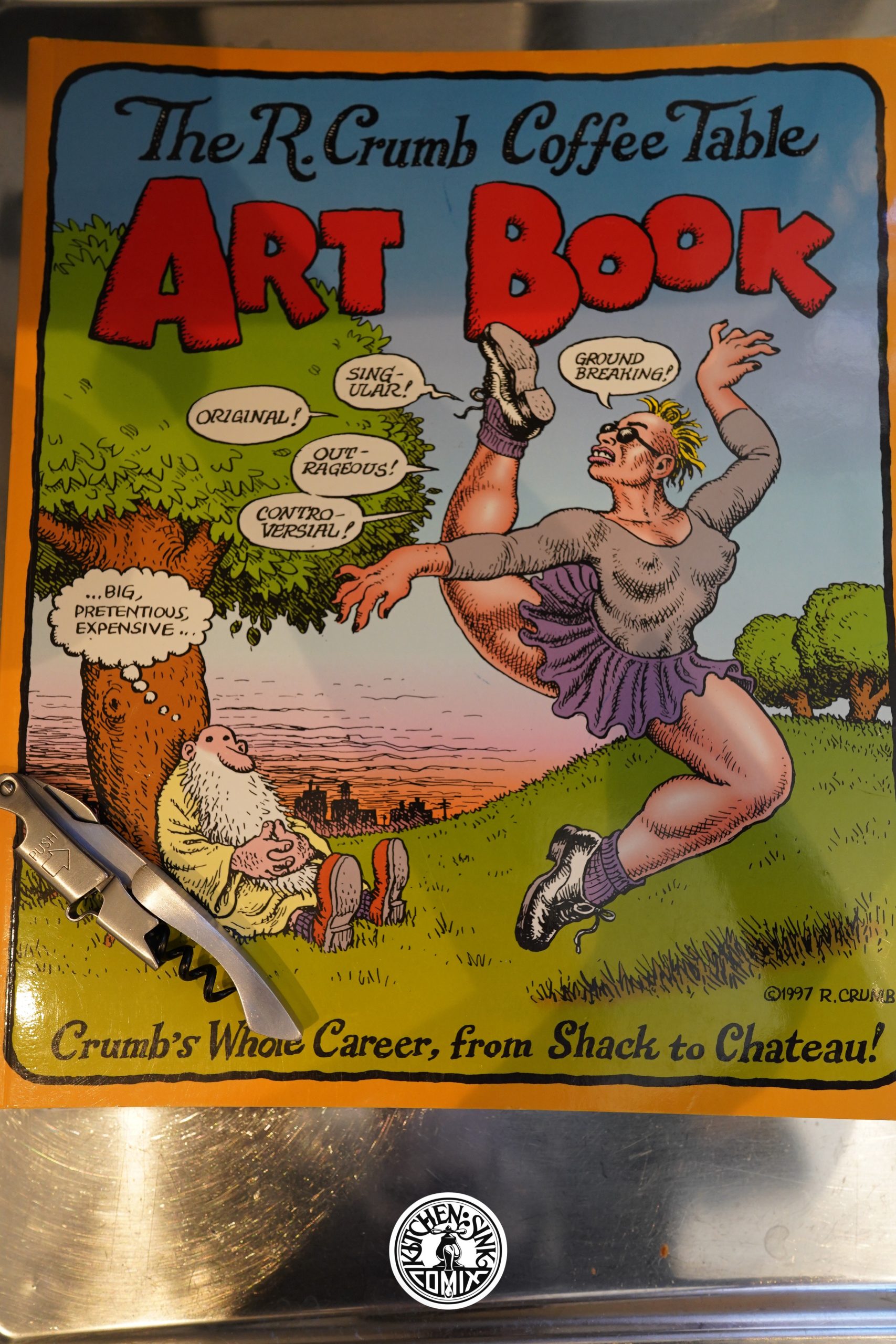
The R. Crumb Coffee Table Art Book (1997) by Robert Crumb
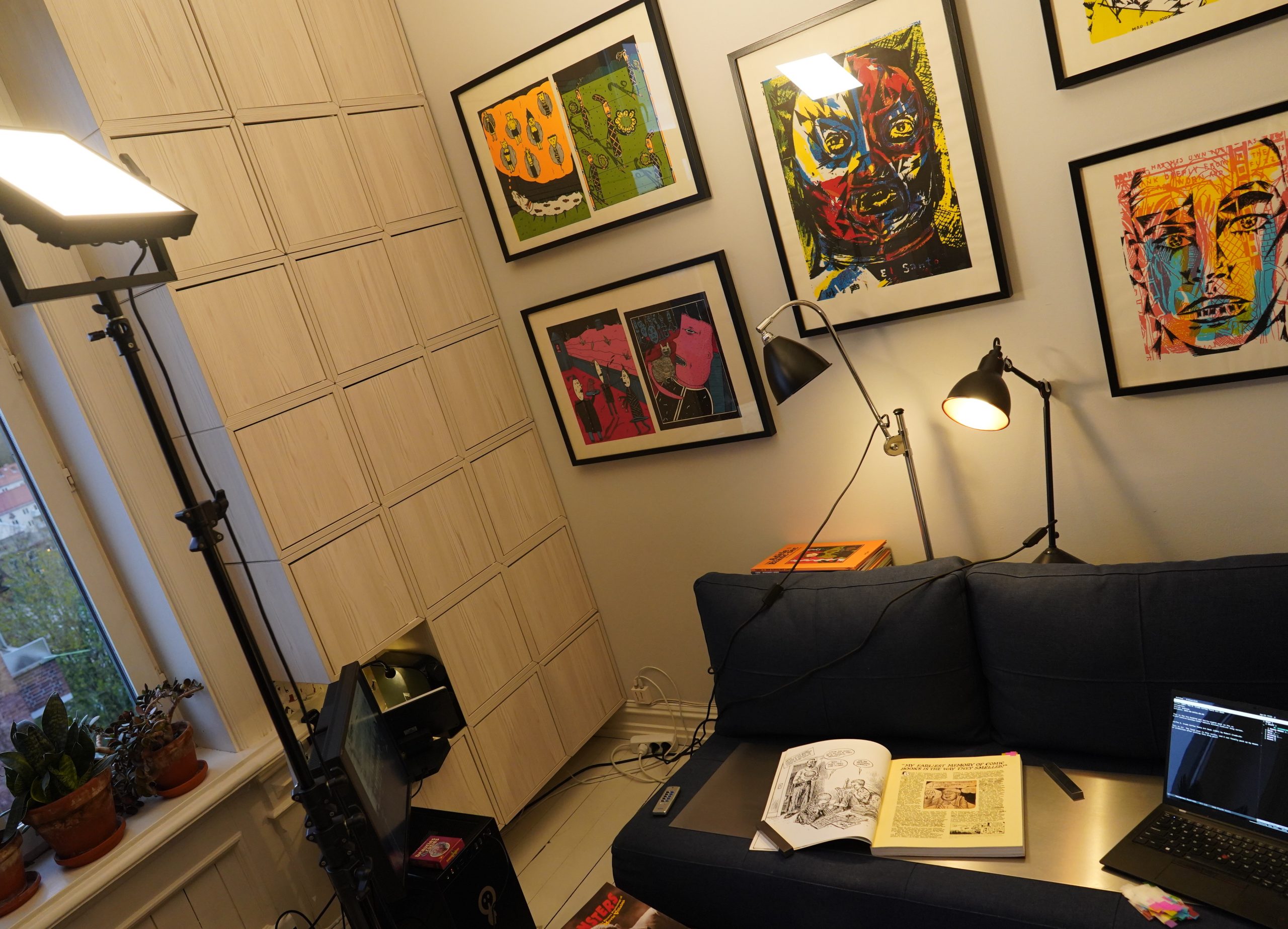
This is it! The final post in this series, and I can finally pack up my means of production after writing this blog post!
Liberate the guest room!
But first, this huge, square book.

It’s not really what I had expected at all. It’s a lavish production, so I had expected little text, few comics and mostly illustrations. Instead what we get is an R. Crumb biography.
Crumb provides the text himself (and hand-letters it as usual), and tells the reader all about his life, from his (and his brother’s) childhood obsession with comics.
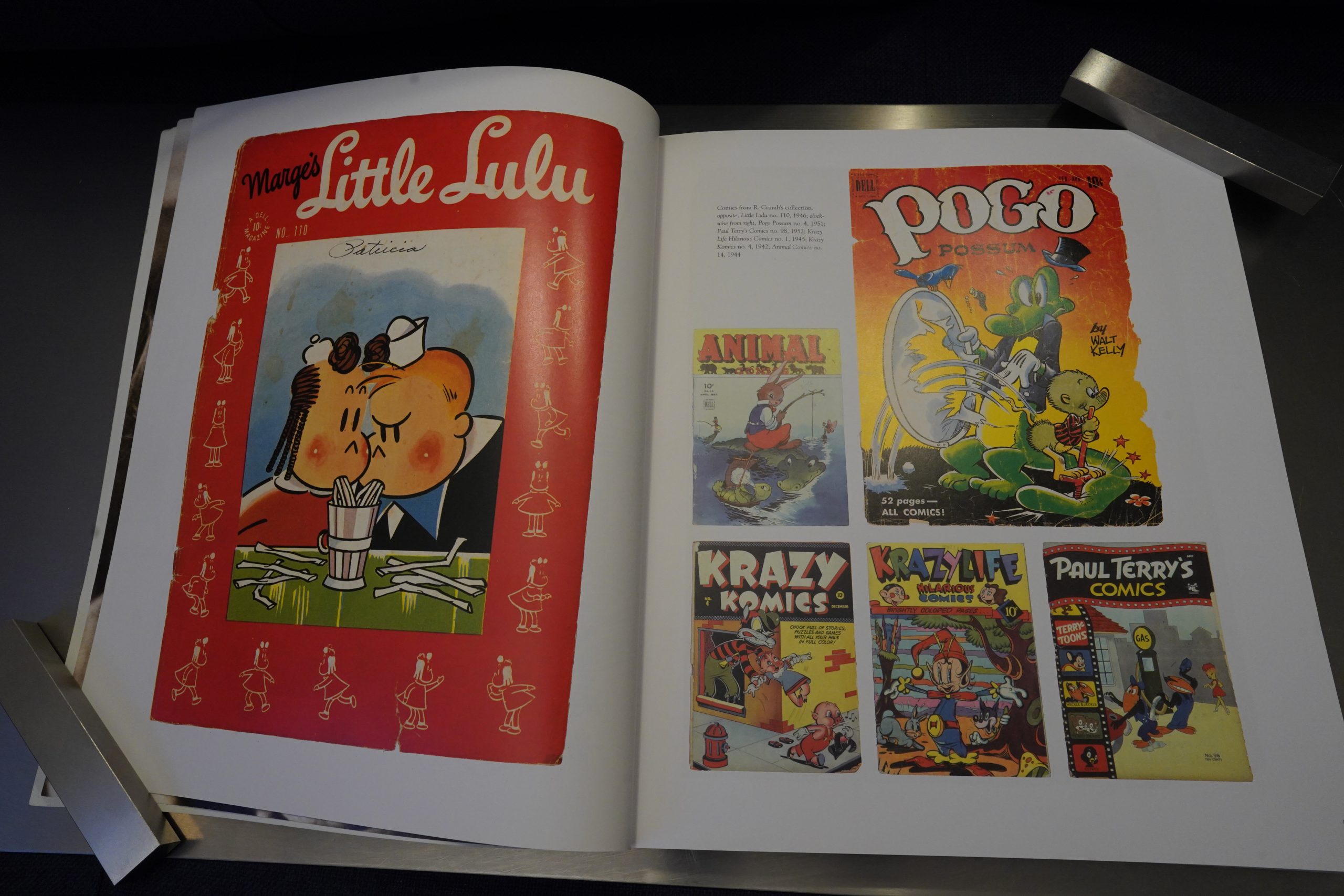
We get a couple pages of ephemera from his childhood, and this is basically what I thought the book was going to be…
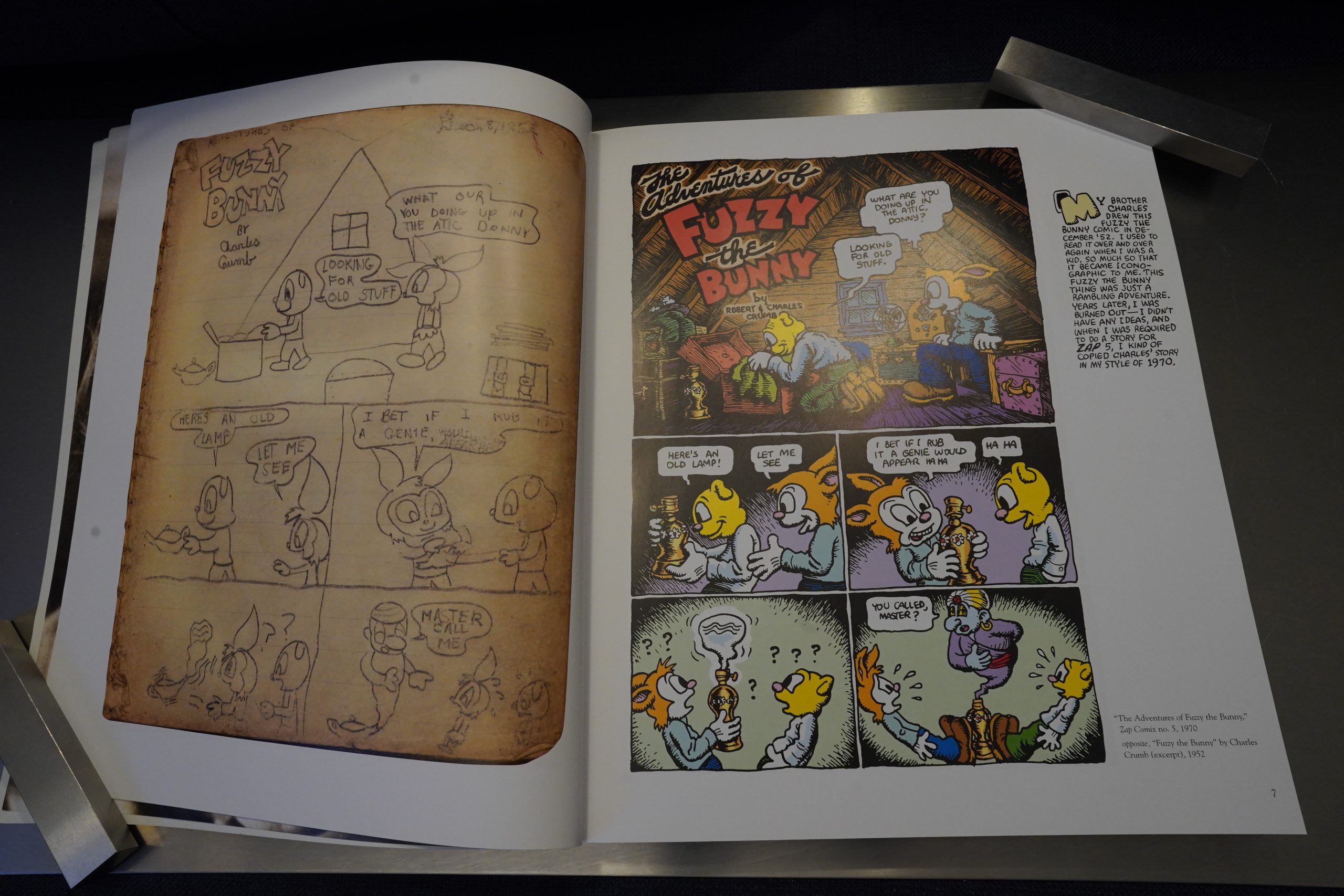
But it’s just a couple pages, and then we get comics relevant to the era he’s describing instead. (These are coloured for this volume by Pete Poplaski.)

So when Crumb talks about his childhood, we get comics — drawn in any era. The book treats the comics as supporting material to the text Crumb writes, really.
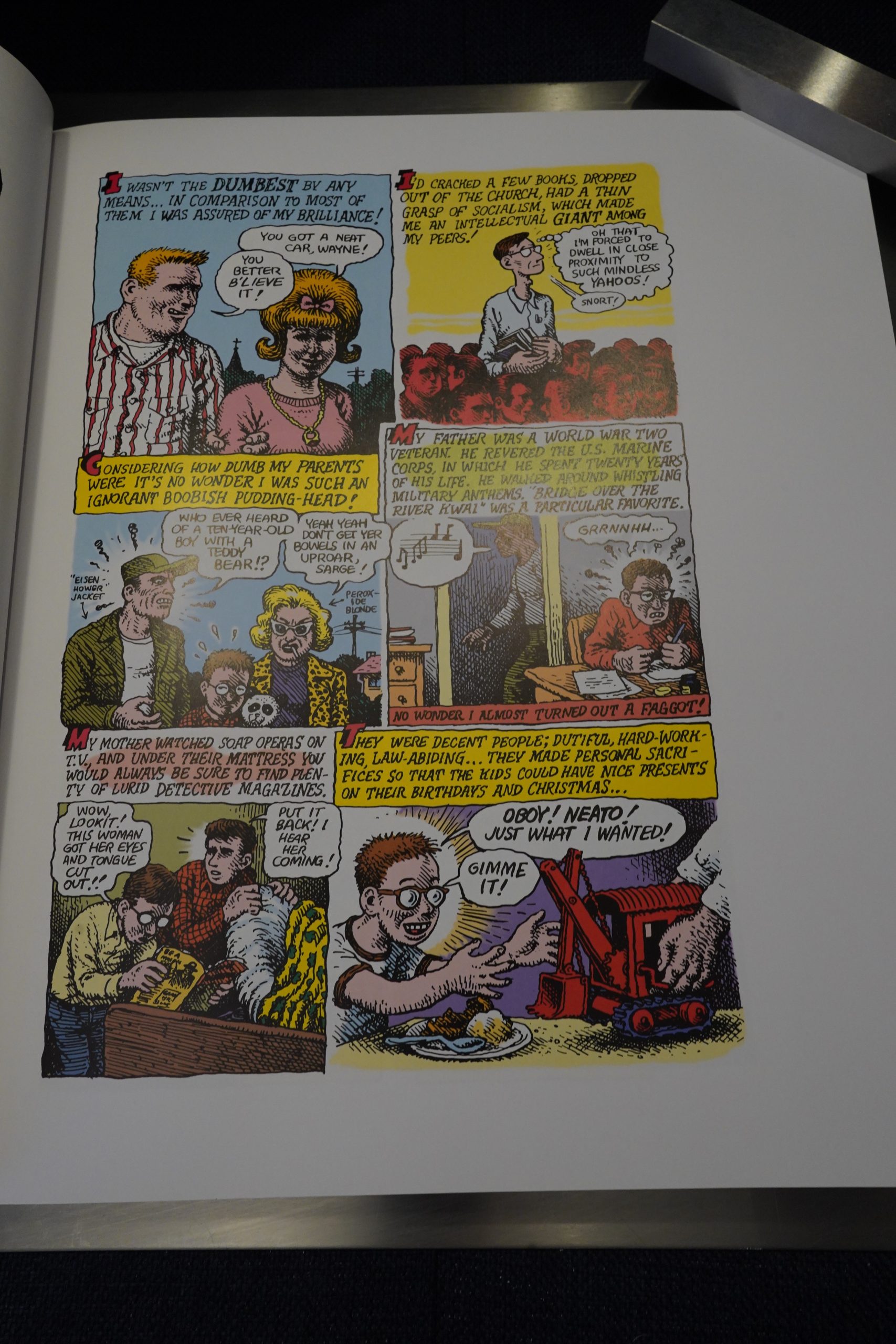
And it works — the comics pieces are clearly marked with when they were created, and it’s fun to skip back and forth in Crumb’s artistic development this way.

We also get many, many excerpts from Crumb’s sketchbooks, but these are mostly chronological.

I’ve read more than my share of Crumb anecdotes, but many of the things he writes about here are new to me. It’s a really well put together book, and makes for a very pleasant way to spend an afternoon.
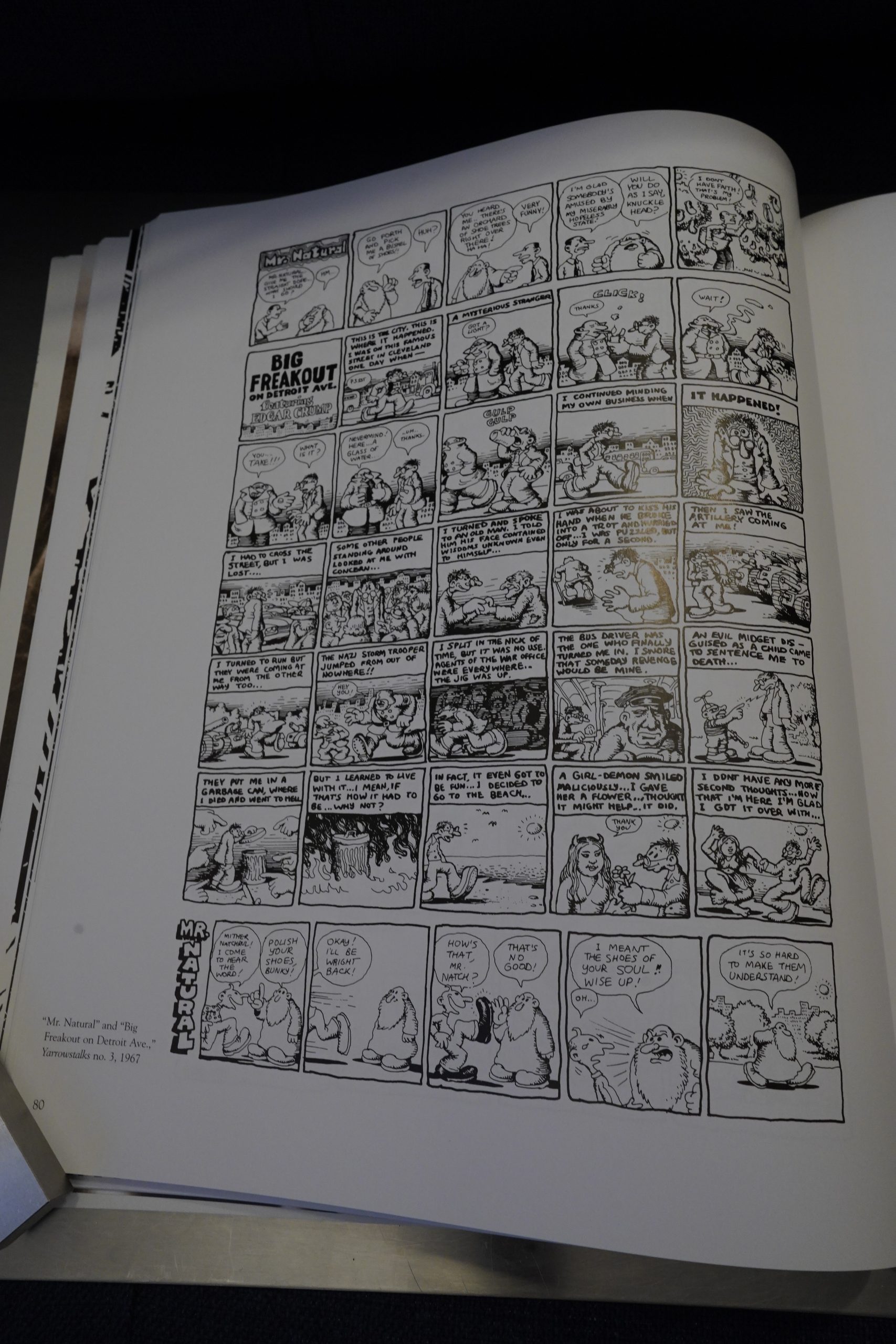
The large format means that many pieces are reproduced larger than originally intended, and that can look a bit disturbing (with very coarse linework). But the format allows reprinting strips that were originally running in newspapers at a pretty comfortable size, so there’s advantages to the format, too.
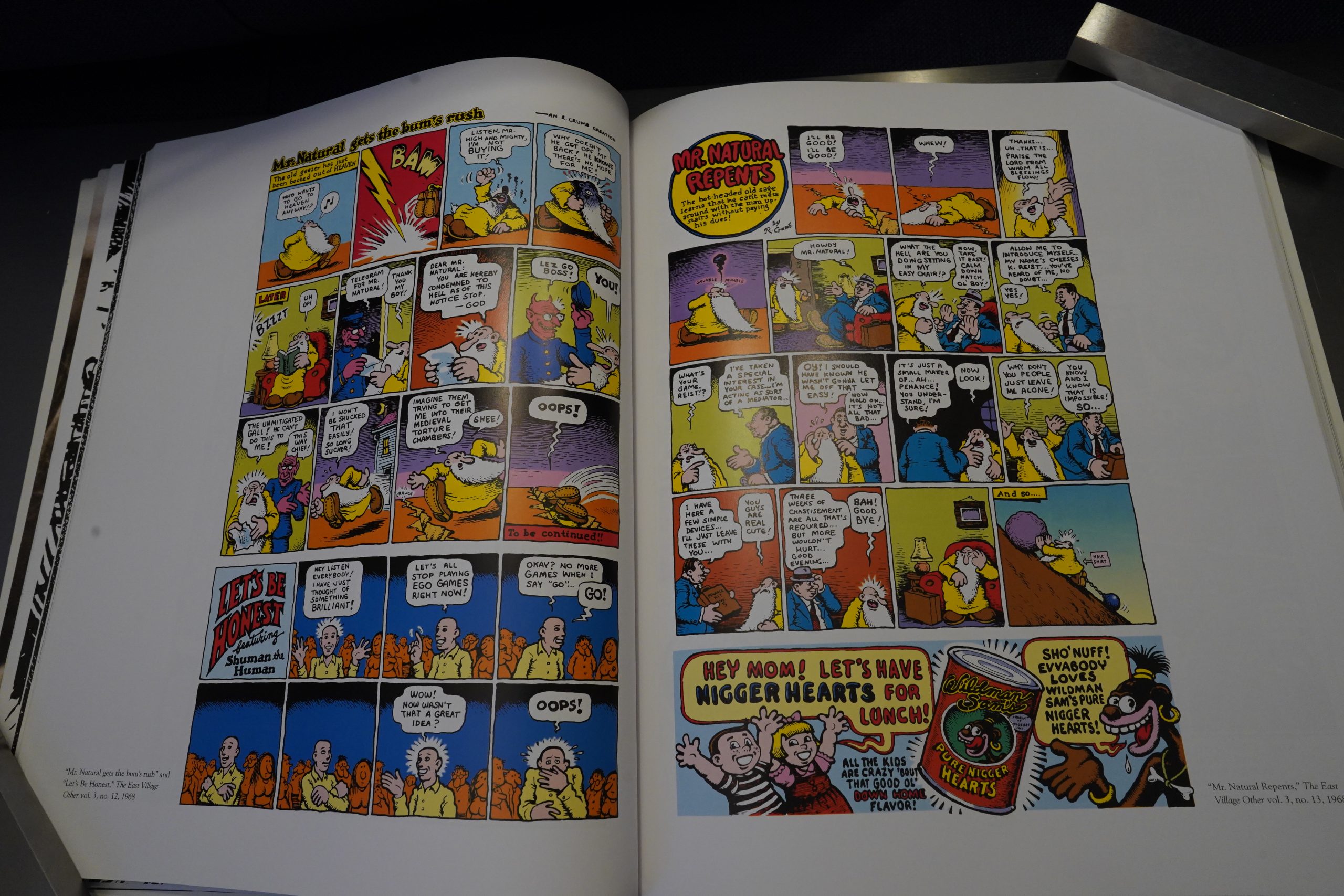
The selection of strips makes sense on one level — we get things that are relevant to the text. This means that there are very few of Crumb’s most famous pieces in here… and they haven’t really excluded Crumb’s most controversial work, either.
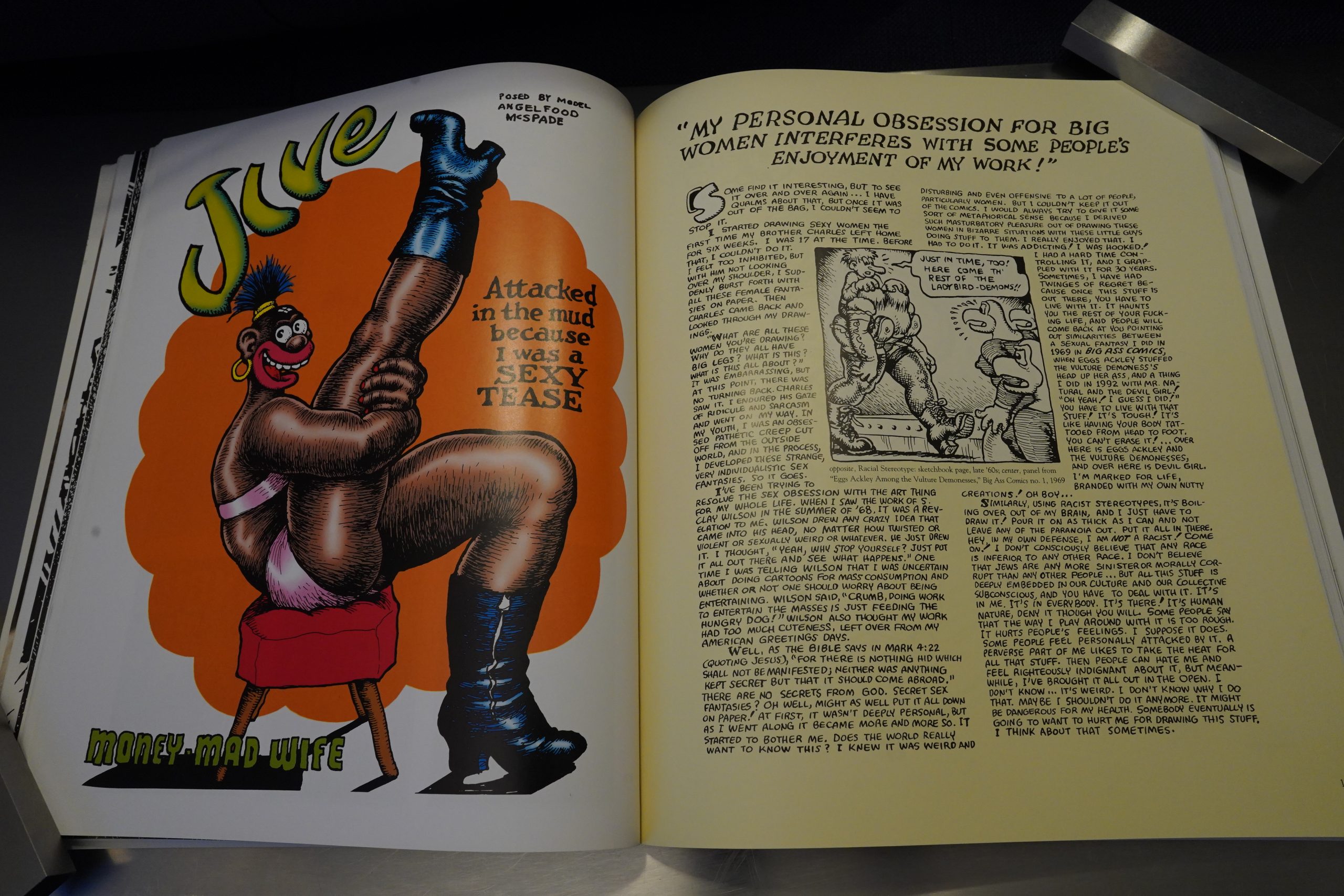
Which Crumb also acknowledges in the text.
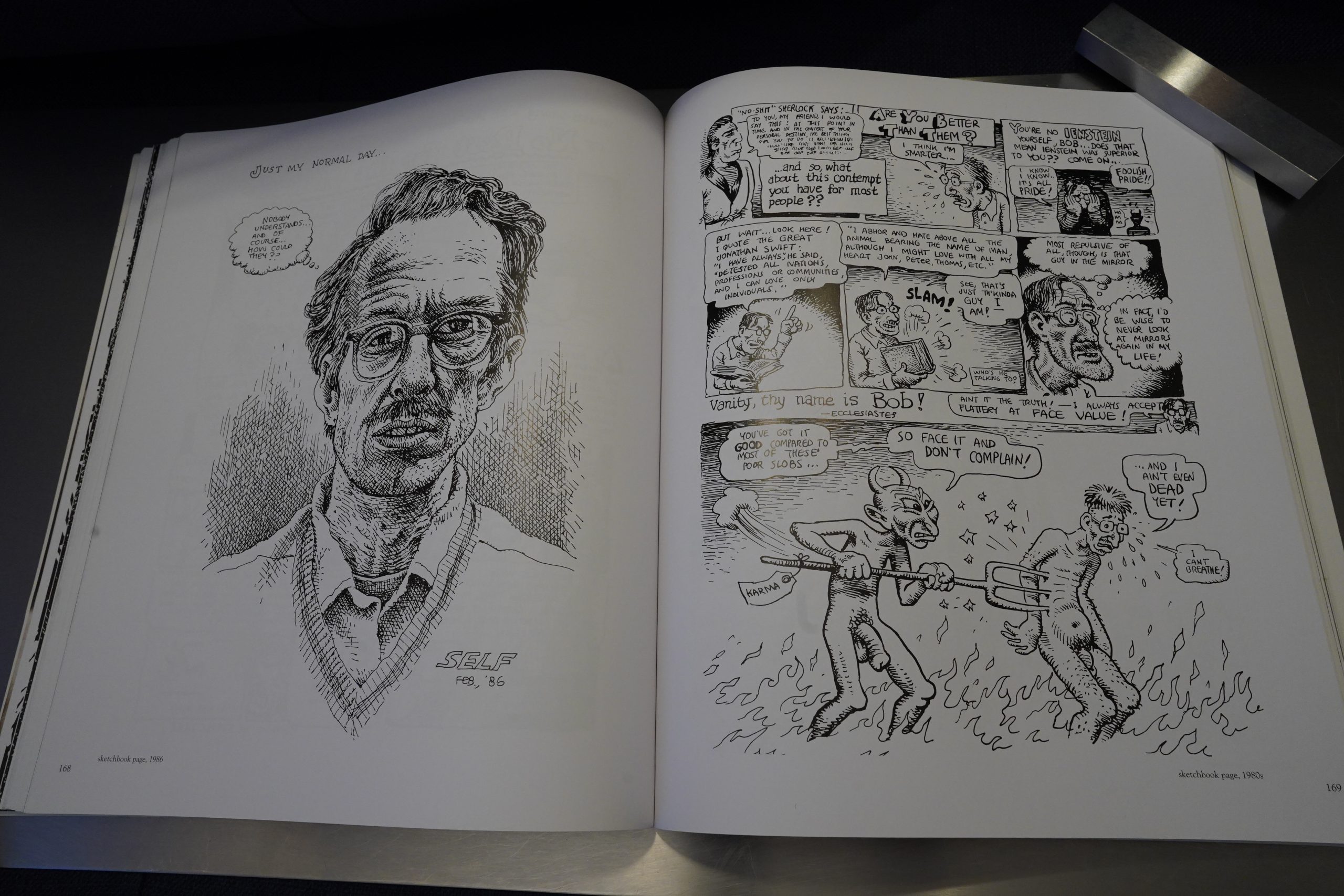
About two thirds of the book is about Crumb’s years of struggle and then success — which makes a lot of sense, too. But after doing all the exciting anecdotes about being poor and travelling on freight trains etc etc… then what? When we reach about 1972, it’s like Crumb’s enthusiasm for the project evaporates. But then again, the years that followed aren’t years of struggle, but “and then I finally married Aline Kominsky, and I was rich and moved to France”, which inherently has less of a dramatic arc.
So we get a whole heap of stuff from his sketchbooks, much of which is really delightful…
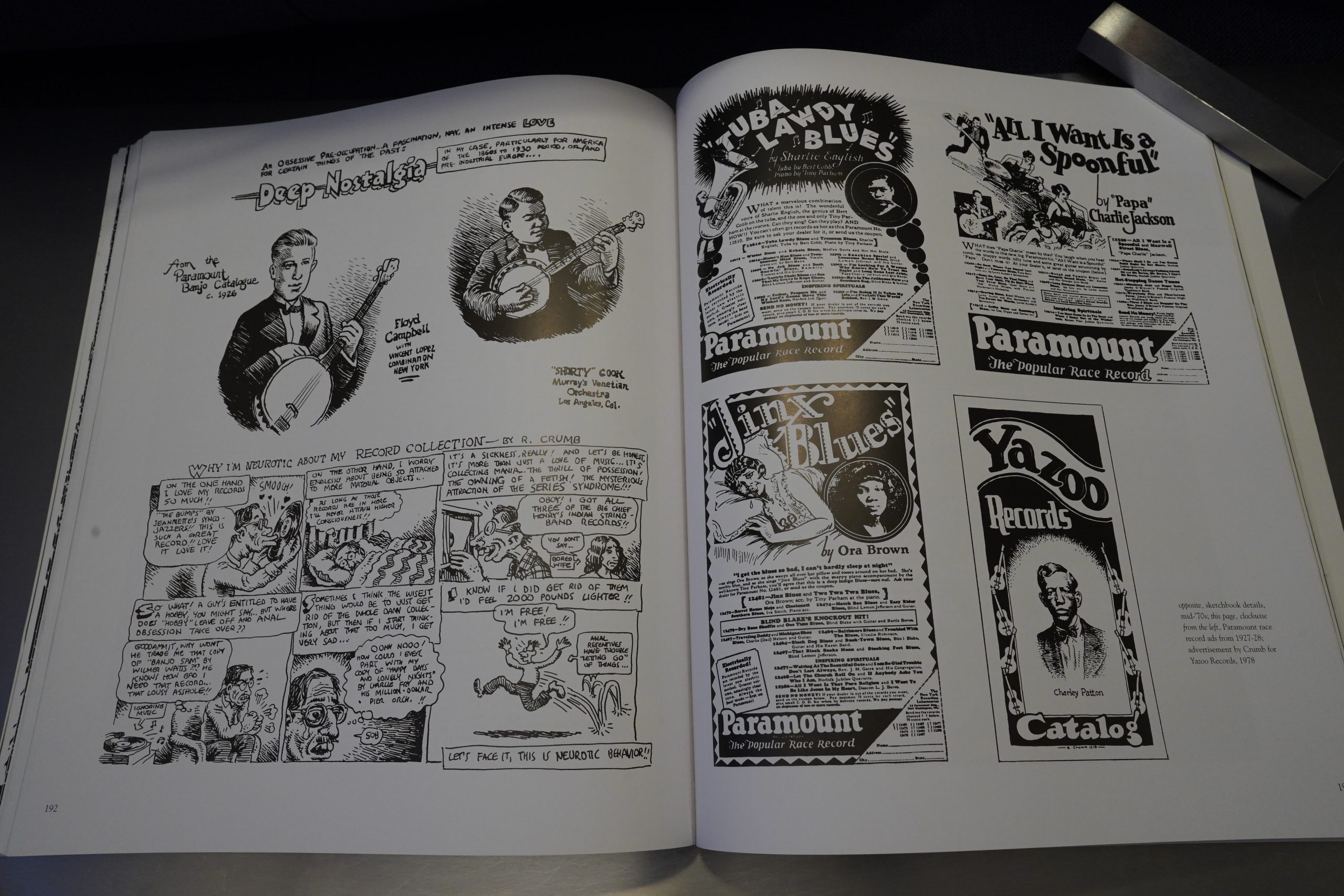
… and some random stuff about collecting old 78 records…
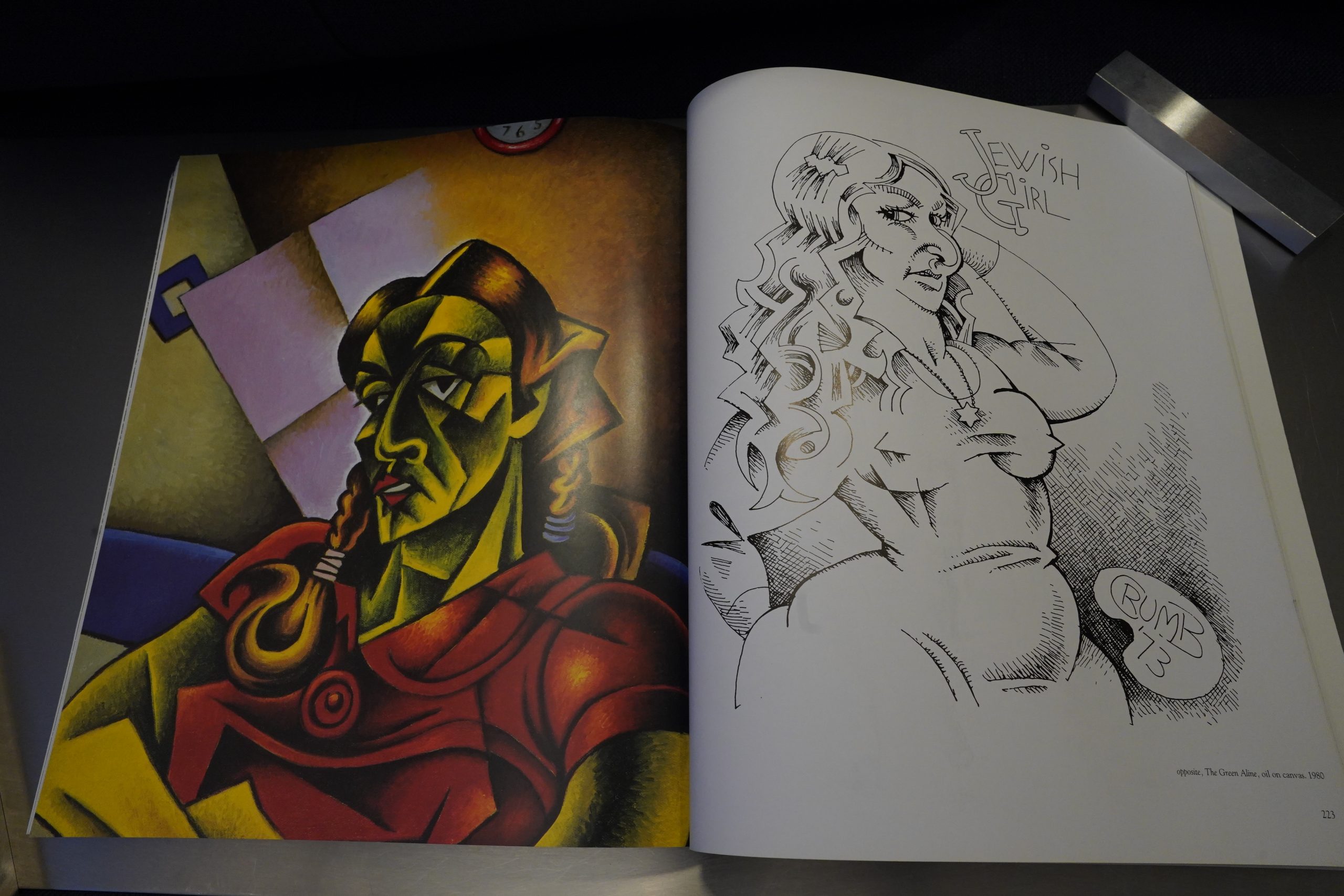
… and even some oil painting he was experimenting with in the early 80s after watching Aline painting.
So the book ends up being a slight let-down: The first two thirds are so entertaining that the last third feels less successful.
But it’s a fine book (if you have the upper body strength to hold it, that is).
The Comics Journal #218, page 15:
CRUMB BOOK ATTACKED ON
Two FRONTS IN INDIANA
The Alexandrian Public Library in
Mt. Vernon, Ind., recently took a
stand in support of Tie R. Crumb
Coffee Table Art Book when a group Of
area residents demanded the book’s
removal.
The controversy began earlier this
year when an I I-year-old girl checked
the book Out Of the library. A com-
plaint by the girl’s mother grew into
a citizen’s petition for the library to
ban Or restrict access to the book. The
book, published by Little Brown and
the now defunct Kitchen Sink Press,
collects work from throughout Rob-
ert Crumb’s career, including social
and political commentary done for
underground conuCS and some ex-
plicit renderings ofCrumb’s infimous
sexual fantasies.
When the library board proved
reluctant to restrict access to the book,
a complaint was made to police, but
Posey County Prosecutor Trent
VanHaaften declined to investigate,
saying it was a matter between the
public and the library board
Shortly before the library board
was scheduled to consider the ques-
tion, the book became the subject of
a criminal complaint in what was
apparently a carefully orchestrated
incident at a nearby Books*Mil-
lion store. Confronted by a group
calling itself Pornography Unwanted
by Evansville Residents (PUER — a
misspelled acronym for PURE?) , store
managers had refused to acquiesce to
the group’S demand that the book be
removed from sale, saying the book
would only be sold to customers above
the age of 18. The group’s director
Michael Lockard sent his own I l-
year-old daughter to purchase the
book and. when she succeeded,
Lockard and the Rev. Brenda Steproe
filed a complaint with police. Lockard
did not respond to requests for com-
ment from the Journal.
The Comics Journal #215, page 25:
KITCHEN VERSUS KITCHEN SINK
Denis Kitchen has filed suit against
his former company, Kitchen Sink
Press, to take possession of inventory
that KSP Chief Financial Officer
Donald Todrin claims Kitchen has
already stolen.
The suit stems from an agree-
ment Kitchen says he made with KSP
Chairman of the Board Fred Seibert
in December of 1998. Seibert had just
fired Kitchen from the comics com-
pany Kitchen had founded 30 years
earlier, reportedly due to a conflict
between Kitchen and Todrin. Ac-
cording to Kitchen, Seibert had asked
Kitchen to stay on another six weeks
to help wind down the company’s
operations and liquidate its assets, and
Kitchen had agreed but only ifcertain
conditions were met.
Kitchen told the Journal he had
made four demands of Seibert: 1) that
owed that $36,000,” Todrin said.
“There’s no question about it. Just as
others are legitimately owed hundreds of
thousands of dollars by KSP.” Todrin
accused Kitchen of using his insider
status at KSP to elbow other creditors
out of the way and grab his share of
the failed company’s assets.
Todrin said Kitchen had taken a
number of books, including 600 cop-
ies of the signed, hardcover Crumb
book, as well as several copies of
Kitchen Sink: The First 25 Years, a
retrospective ofKitchen’s career. The
Crumb books originally sold for $300
apiece, and Todrin estimated the total
value of the books removed from the
warehouse by Kitchen to be closer to
$300,000 than the $36,000 owed
Kitchen.
According to Kitchen, he is owed
the books, because his own money
was used to pay the pre-press costs of
preparing film for the book’s co-
publisher Little Brown. He
acknowledged that he had taken the
inventory, which he said was bemg
stored in “a neutral place.” He said he
had not taken all the Crumb books —
only what he calculated would equal
the amount owed him. The value of
the books is not the same as their retail
price, he said, noting that the books
that remained had not found buyers at
the recommended retail price of$300
apiece. Why file the suit if he already
has the books? “Seibert reneged on
the deal,” Kitchen said. “They con-
tested it in writing and gave me a
week’s notice to return the inven-
tory. I had no choice but to file the
suit. ”
Opinions about the book are mixed:
The part about R. Crumb’s background and how he got started in comics was interesting. I respect what the guy was trying to do as an artist, being open about his thoughts and pushing boundaries, etc., but honestly, his images of women were really disturbing. His images of himself were equally disturbing. I don’t think he needed to unleash EVERYTHING that crossed his mind into the public domain, and it’s an interesting choice that he did. That said, I also thought some of his comics were hilarious, and then felt kind of guilty that I did.
It’s mostly positive:
There is surely no quibbling with the estimation of Robert Crumb being one of the greatest ever comic artists. While many of his strips work through his neuroses and internal conflicts, from the mid-1960s onward these have been produced with such a creative intensity and technical skill that his cultural legacy and influence exceeds almost any other comic artist. This being the case, you can’t really go wrong with a thirty year retrospective, a greatest hits if you will, with Crumb providing introductions to fifteen chapters taking a broad chronological sweep through his work to the mid-1990s. A clever conceit on the part of editor Pete Poplaski ensures the chronology is autobiographical rather than when work was produced, so later Crumb strips appear early in the pagination, such as ‘Dumb’, his 1994 reflection on his childhood.
Heh:
The minds behind the ”Coffee Table Art Book” — editors at Little, Brown; Crumb’s longtime publisher Denis Kitchen, and, with his famous ambivalence, Crumb himself — know that the film’s upscale audience would sooner confess to watching Jerry Springer than be caught buying his work in a comic book specialty store. ”This puts him in the art section of a bookstore,” says Mr. Kitchen, ”which, with the possible exception of ‘Maus’ author and New Yorker cover artist Art Spiegelman, just doesn’t happen to cartoonists.”
[…]
Mr. Crumb’s main involvement in the package, it seems, was to nudge it away from solemnity. That included the title itself: ”Kitchen had a much more serious idea about it,” he says in a telephone interview from Paris (Mr. Crumb’s home base is the small French village of Sauve, where he lives with his wife, the artist Aline Kominsky, and their 16-year-old daughter, Sophie). ” ‘The Art of R. Crumb,’ like ‘The Art of Toulouse- Lautrec.’ I had to make fun of the whole format, just in order to live with it.”
Strangely enough, it seems like this book has never been reprinted… but perhaps that’s because there’s an awful lot of copies of this floating around, even now, 25 years later:

This is the two hundred and thirty-eighth post in the Entire Kitchen Sink blog series.
